 Search by Keyword
|
“ALL MY LOVING”
(John Lennon – Paul McCartney)
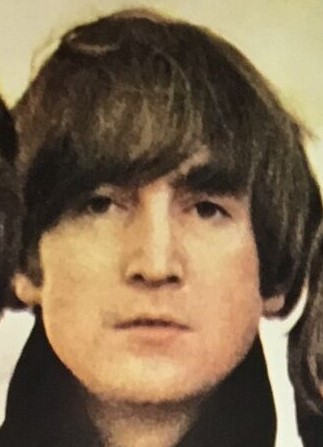 “Nobody ever made it in America, and we were dying to be the first.” This statement by John Lennon in September of 1964 puts in a nutshell how The Beatles felt about conquering the United States. They had truly taken over Britain and had made inroads in numerous other countries by 1963, but the US was their ultimate goal. They knew, though, that no foreign act had ever made more than a fleeting impact in the states. “Nobody ever made it in America, and we were dying to be the first.” This statement by John Lennon in September of 1964 puts in a nutshell how The Beatles felt about conquering the United States. They had truly taken over Britain and had made inroads in numerous other countries by 1963, but the US was their ultimate goal. They knew, though, that no foreign act had ever made more than a fleeting impact in the states.
Regarding the American charts, Lennon continued, “you get the odd hit from Britain or you get the odd hit from Germany; there’s a lot of freak records.” They knew that to be able to have four straight #1 hits in America, as they had in Britain in 1963, would be a daunting task indeed. Actually, no foreign act had ever achieved this.
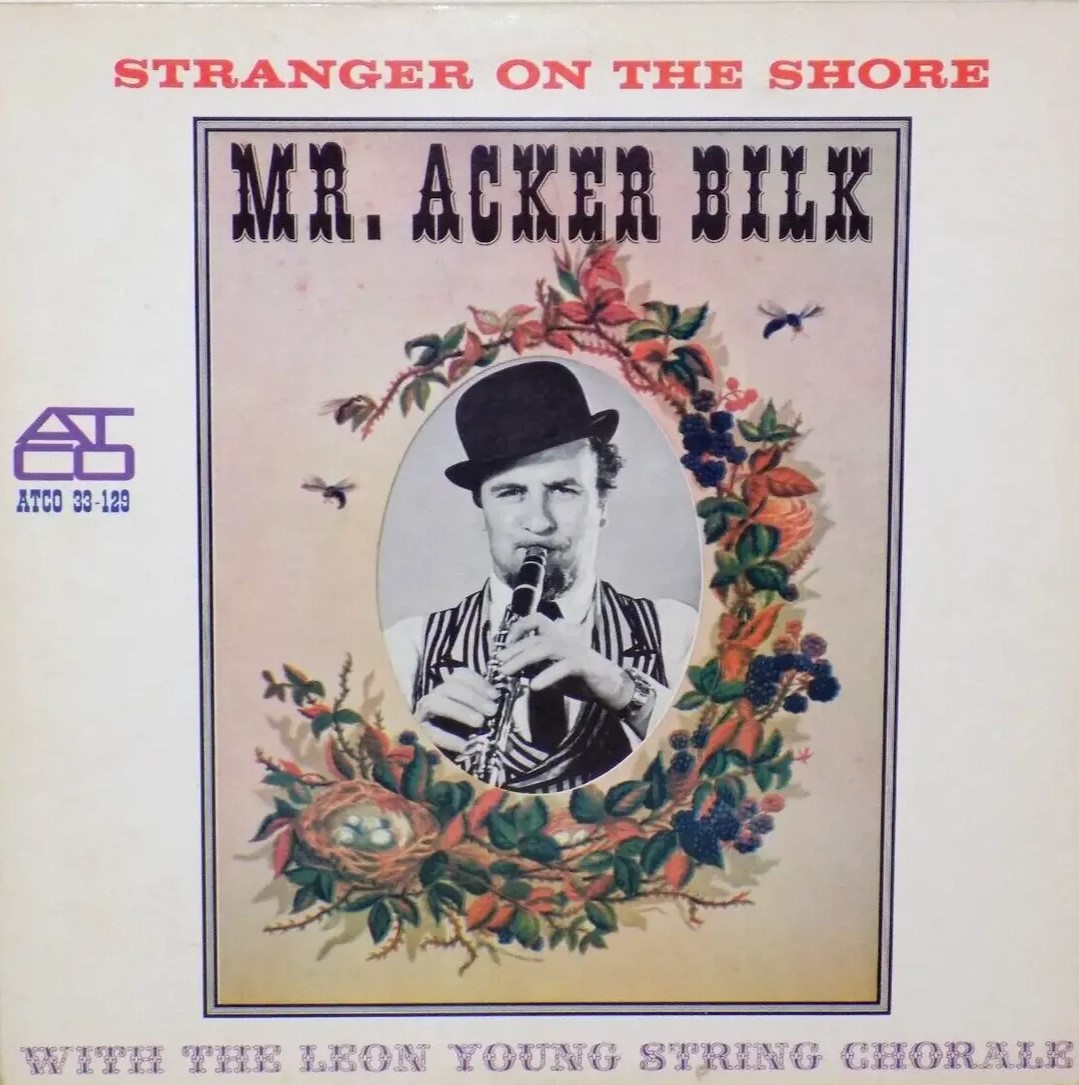 If only they could get US exposure like they were having at home. In Britain, “She Loves You” sold an unprecedented 1.3 million copies and “I Want To Hold Your Hand” sold 1.25 million. BBC radio programs, as well as national television broadcasts, brought The Beatles faces and music into the homes of millions. Would they be able to penetrate the American market in the same way? And if they did, would they just end up a ‘freak’ one-hit-wonder like the other British artists before them, such as Mr. Acker Bilk (“Stranger On The Shore”) or The Tornadoes (“Telstar”)? If only they could get US exposure like they were having at home. In Britain, “She Loves You” sold an unprecedented 1.3 million copies and “I Want To Hold Your Hand” sold 1.25 million. BBC radio programs, as well as national television broadcasts, brought The Beatles faces and music into the homes of millions. Would they be able to penetrate the American market in the same way? And if they did, would they just end up a ‘freak’ one-hit-wonder like the other British artists before them, such as Mr. Acker Bilk (“Stranger On The Shore”) or The Tornadoes (“Telstar”)?
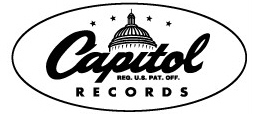 Brian Epstein, The Beatles manager, set the groundwork that allowed for the unthinkable to happen. As well as finally convincing Capitol Records to release The Beatles records in the US, he also struck a deal to have his clients appear on the highly influential American variety show “The Ed Sullivan Show.” This show, which officially broke Elvis Presley into the mainstream in October of 1956, had the potential for mass exposure to its millions of weekly viewers. Reaching just over a million sales with their singles in Britain was nothing compared with what the “Ed Sullivan Show” could do. Brian Epstein, The Beatles manager, set the groundwork that allowed for the unthinkable to happen. As well as finally convincing Capitol Records to release The Beatles records in the US, he also struck a deal to have his clients appear on the highly influential American variety show “The Ed Sullivan Show.” This show, which officially broke Elvis Presley into the mainstream in October of 1956, had the potential for mass exposure to its millions of weekly viewers. Reaching just over a million sales with their singles in Britain was nothing compared with what the “Ed Sullivan Show” could do.
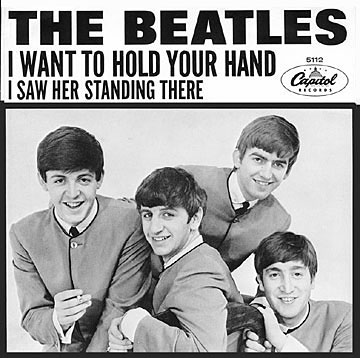 As history testifies, on February 9th, 1964, an estimated 73 million viewers watched this much hyped young Liverpool group perform five songs "live" from CBS-TV Studio 50 in New York City. The final two songs they performed on that day were both sides of their current American #1 hit “I Want To Hold Your Hand,” but they needed to decide on a song to put in the start-off position that would make the best first impression. This was a ‘make or break’ decision, because the 73 million curiosity seekers could very well have chosen to turn the channel if they weren’t impressed. As history testifies, on February 9th, 1964, an estimated 73 million viewers watched this much hyped young Liverpool group perform five songs "live" from CBS-TV Studio 50 in New York City. The final two songs they performed on that day were both sides of their current American #1 hit “I Want To Hold Your Hand,” but they needed to decide on a song to put in the start-off position that would make the best first impression. This was a ‘make or break’ decision, because the 73 million curiosity seekers could very well have chosen to turn the channel if they weren’t impressed.
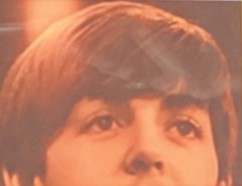 Whether by plan or by sheer luck, they chose to start off their set, as well as the whole show, with a very strong Paul McCartney number that was just a track on their current American album “Meet The Beatles!” “All My Loving” was the song that made the immediate good first impression and kept that huge television audience tuned in for the whole show. And, as George Harrison stated, “While the show was on, there were no reported crimes, or very few. When The Beatles were on Ed Sullivan, even the criminals had a rest for ten minutes.” Whether by plan or by sheer luck, they chose to start off their set, as well as the whole show, with a very strong Paul McCartney number that was just a track on their current American album “Meet The Beatles!” “All My Loving” was the song that made the immediate good first impression and kept that huge television audience tuned in for the whole show. And, as George Harrison stated, “While the show was on, there were no reported crimes, or very few. When The Beatles were on Ed Sullivan, even the criminals had a rest for ten minutes.”
Songwriting History
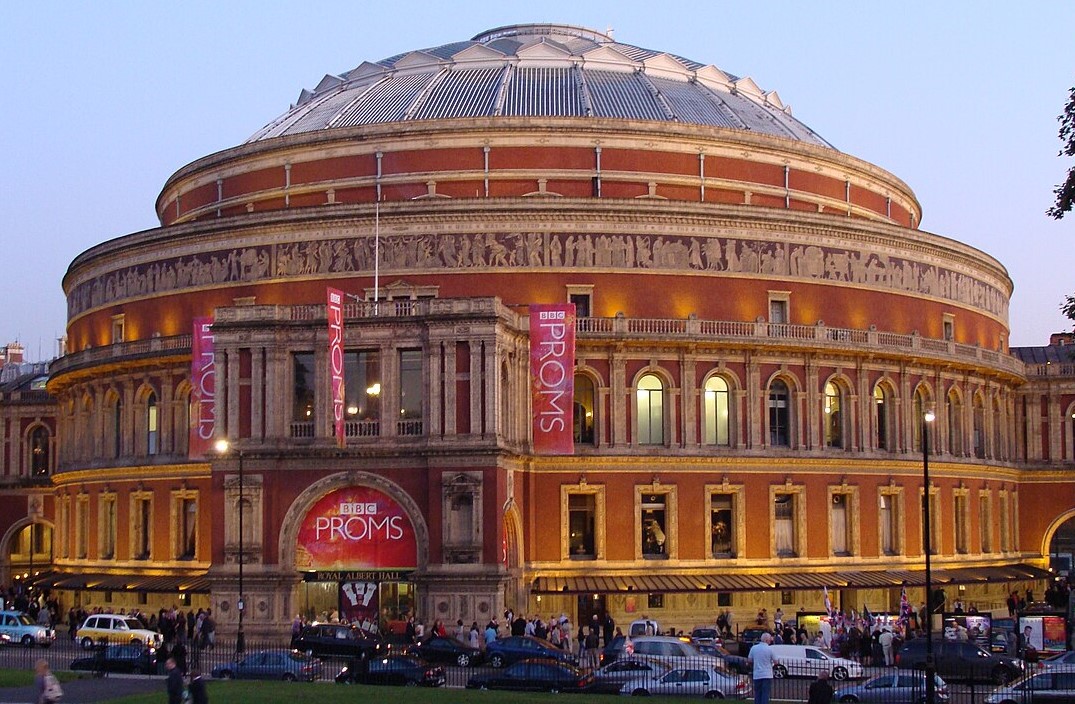 Although "All My Loving" was written a month or so after Paul and actress Jane Asher had met, which was on April 18th, 1963 at The Beatles' show at London's Royal Albert Hall, it appears that Paul did not write the song with her in mind as many assume. "Although we'd met at this point," Paul explains in his 2021 book "The Lyrics," "I don't know that I was thinking specifically of Jane Asher when I wrote this, though we were courting. It's probably more of a reflection on what our lives were like then - leaving behind family and friends to go on tour and experience all these new adventures." Although "All My Loving" was written a month or so after Paul and actress Jane Asher had met, which was on April 18th, 1963 at The Beatles' show at London's Royal Albert Hall, it appears that Paul did not write the song with her in mind as many assume. "Although we'd met at this point," Paul explains in his 2021 book "The Lyrics," "I don't know that I was thinking specifically of Jane Asher when I wrote this, though we were courting. It's probably more of a reflection on what our lives were like then - leaving behind family and friends to go on tour and experience all these new adventures."
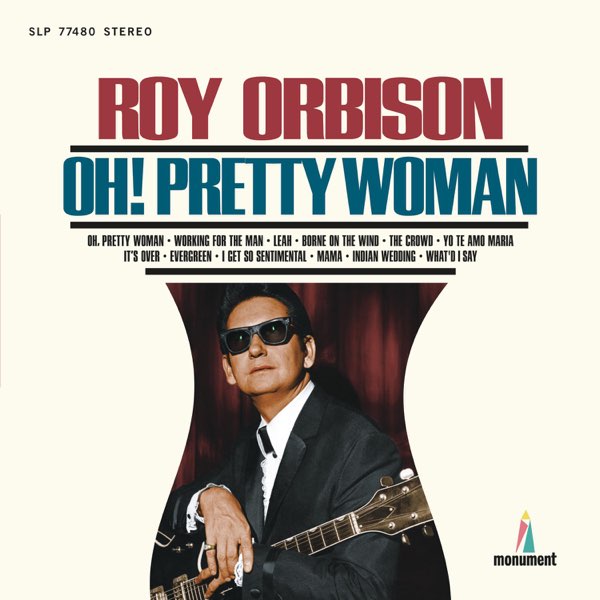 The specific adventure Paul here refers to is The Beatles' third nationwide package tour with Roy Orbison as the headlining act (The Beatles replacing him as headliner as the tour progressed), which ran from May 18th to June 9th, 1963. "We were on a package tour, with probably five or six other bands, because one act was not enough to sell tickets," Paul continues. "I'd started work on the lyrics on the bus and back then we were playing what was known as the Moss Empires circuit. The Moss Empires company owned a number of venues across the country, which would be some of the stops on the tour. They were these large, gorgeous turn-of-the-century music halls, but nowadays most of them are bingo halls. These places had really nice, big, empty backstage areas...we arrived at the venue, and with all the hustle and bustle around me - all the various bands and tour crews and stagehand running about - I made my way to a piano and then somehow found the chords." In his book "Many Years From Now," Paul adds: "I didn't have a guitar, it was probably with our road manager, and I remember working the tune out to it on the piano. It was a good show song, it worked well live." The specific adventure Paul here refers to is The Beatles' third nationwide package tour with Roy Orbison as the headlining act (The Beatles replacing him as headliner as the tour progressed), which ran from May 18th to June 9th, 1963. "We were on a package tour, with probably five or six other bands, because one act was not enough to sell tickets," Paul continues. "I'd started work on the lyrics on the bus and back then we were playing what was known as the Moss Empires circuit. The Moss Empires company owned a number of venues across the country, which would be some of the stops on the tour. They were these large, gorgeous turn-of-the-century music halls, but nowadays most of them are bingo halls. These places had really nice, big, empty backstage areas...we arrived at the venue, and with all the hustle and bustle around me - all the various bands and tour crews and stagehand running about - I made my way to a piano and then somehow found the chords." In his book "Many Years From Now," Paul adds: "I didn't have a guitar, it was probably with our road manager, and I remember working the tune out to it on the piano. It was a good show song, it worked well live."
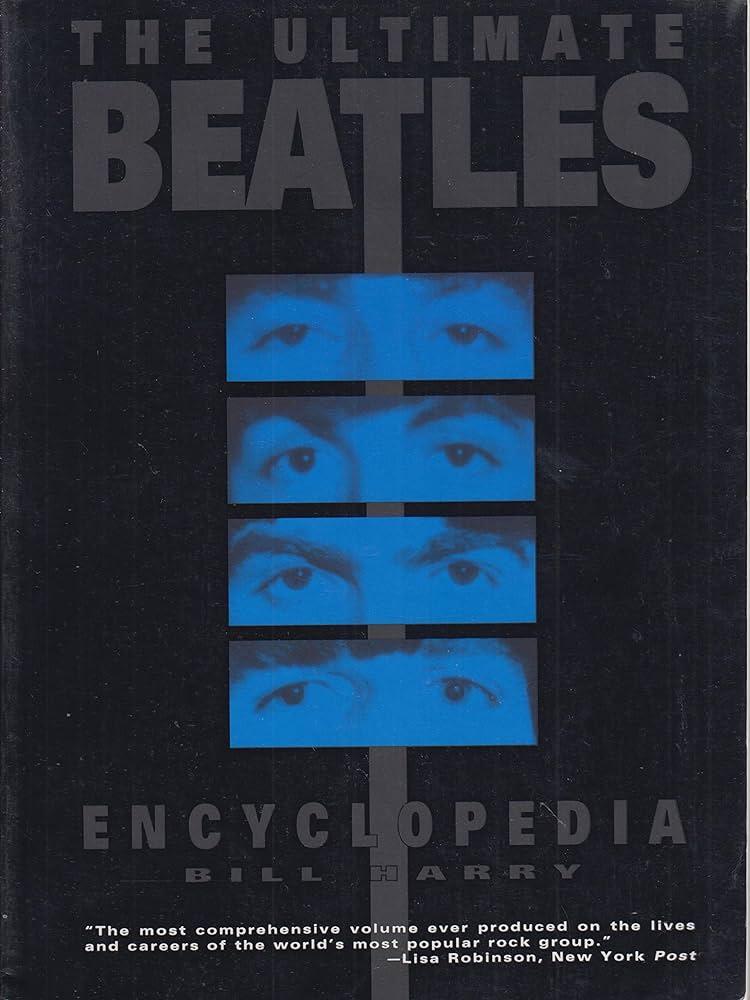 The song was written in a very unconventional way for McCartney, being that it was actually written as a poem first and put to music later. "I was on a tour bus somewhere in the UK, with nothing to do, and I started to think of these words: 'Close your eyes...," McCartney remembers. “It was the first song I’d ever written the words first...I never wrote words first, it was always some kind of accompaniment. I’ve hardly ever done it since either.” Journalist Bill Harry, creator of '60s newspaper Mersey Beat, stated in his book "The Ultimate Beatles Encyclopedia" that "Paul originally conceived ("All My Loving") one day while having a shave," quoting McCartney as saying he wrote the song "like a piece of peotry and then, I think, I put a song to it later." The song was written in a very unconventional way for McCartney, being that it was actually written as a poem first and put to music later. "I was on a tour bus somewhere in the UK, with nothing to do, and I started to think of these words: 'Close your eyes...," McCartney remembers. “It was the first song I’d ever written the words first...I never wrote words first, it was always some kind of accompaniment. I’ve hardly ever done it since either.” Journalist Bill Harry, creator of '60s newspaper Mersey Beat, stated in his book "The Ultimate Beatles Encyclopedia" that "Paul originally conceived ("All My Loving") one day while having a shave," quoting McCartney as saying he wrote the song "like a piece of peotry and then, I think, I put a song to it later."
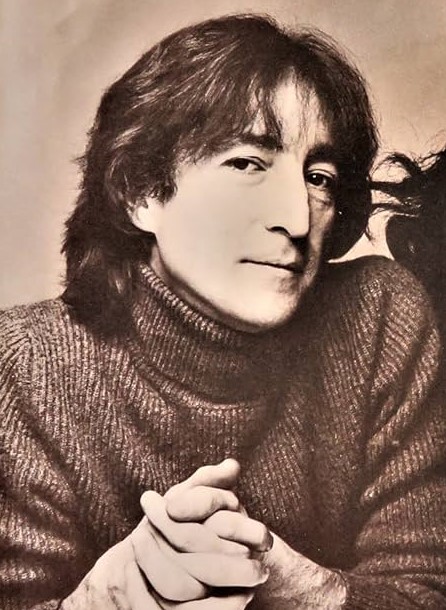 This appears to conflict with Paul's detailed accounts outlined herein (unless, of course, he was in the habit of shaving while on a tour bus). Both McCartney and Lennon attest to the song being entirely written by Paul. "'All My Loving' is Paul, I regret to say, Ha-ha-ha," John stated in his 1980 Playboy interview, adding, "Because it's a damn good piece of work." Lennon also described the song as “one of his first biggies.” This appears to conflict with Paul's detailed accounts outlined herein (unless, of course, he was in the habit of shaving while on a tour bus). Both McCartney and Lennon attest to the song being entirely written by Paul. "'All My Loving' is Paul, I regret to say, Ha-ha-ha," John stated in his 1980 Playboy interview, adding, "Because it's a damn good piece of work." Lennon also described the song as “one of his first biggies.”
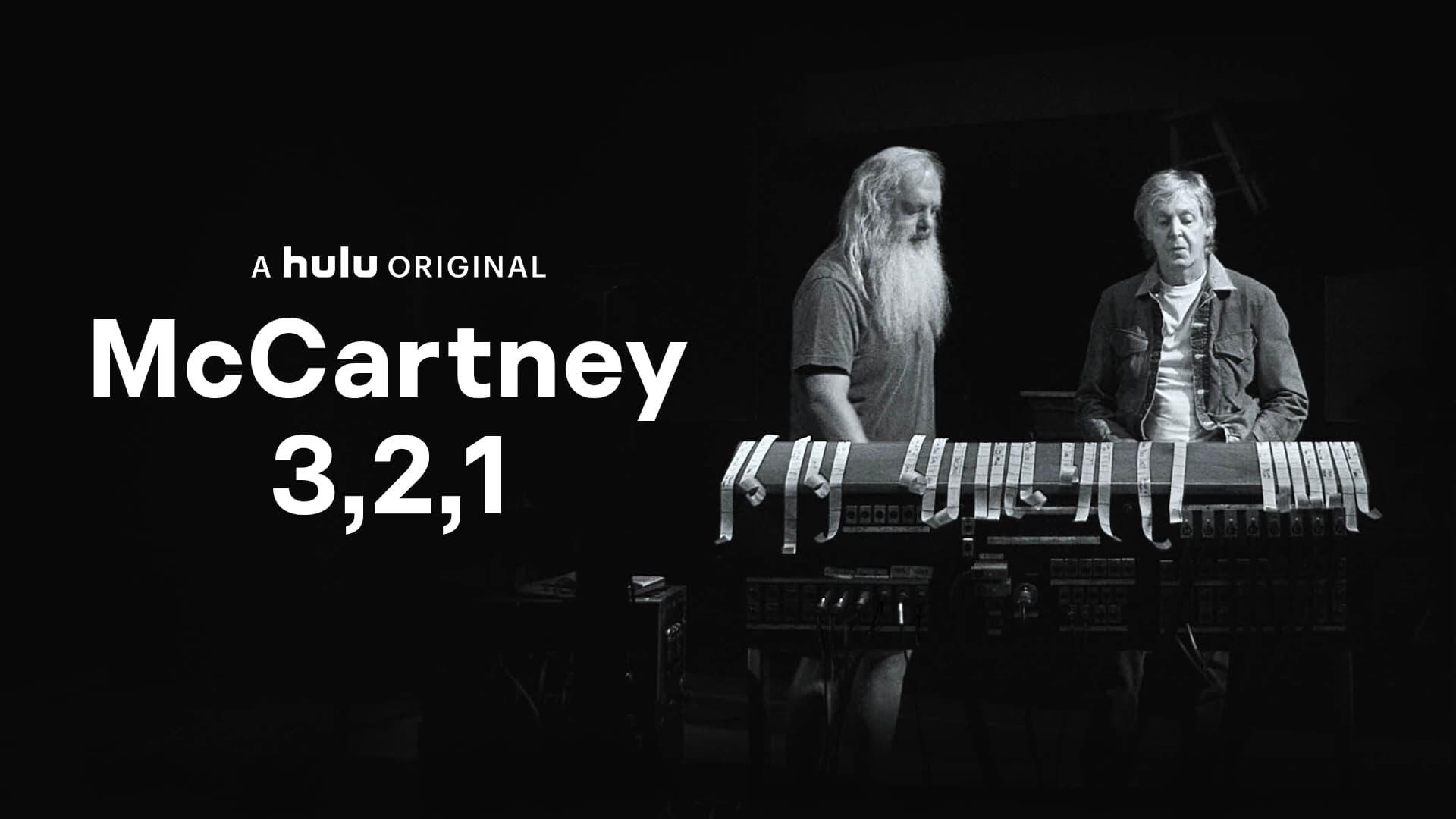 In the 2021 Hulu series "McCartney 3,2,1," Paul relates the experience of writing the song: "We were on a tour bus and, nothing much happening, and I was thinking...like 'Honey, I'll be home, I'll send all my loving.' There was no recording devices so you had to remember them, but you'd kind of wake up and it'd be there. John would have remembered it anyway. So, we realized, y'know, we were writing songs that were memorable, not 'cause we wanted them to be memorable, but because we had to remember them, y'know. It's a very practical reason, really." Gary Evans, the son of road manager Mal Evans, claimed in a 2023 interview that his father inspired the lyric "while I'm away, I'll write home everyday," which related to how Mal Evans agreed to write home to his wife daily while he was on tour with The Beatles in 1963. In the 2021 Hulu series "McCartney 3,2,1," Paul relates the experience of writing the song: "We were on a tour bus and, nothing much happening, and I was thinking...like 'Honey, I'll be home, I'll send all my loving.' There was no recording devices so you had to remember them, but you'd kind of wake up and it'd be there. John would have remembered it anyway. So, we realized, y'know, we were writing songs that were memorable, not 'cause we wanted them to be memorable, but because we had to remember them, y'know. It's a very practical reason, really." Gary Evans, the son of road manager Mal Evans, claimed in a 2023 interview that his father inspired the lyric "while I'm away, I'll write home everyday," which related to how Mal Evans agreed to write home to his wife daily while he was on tour with The Beatles in 1963.
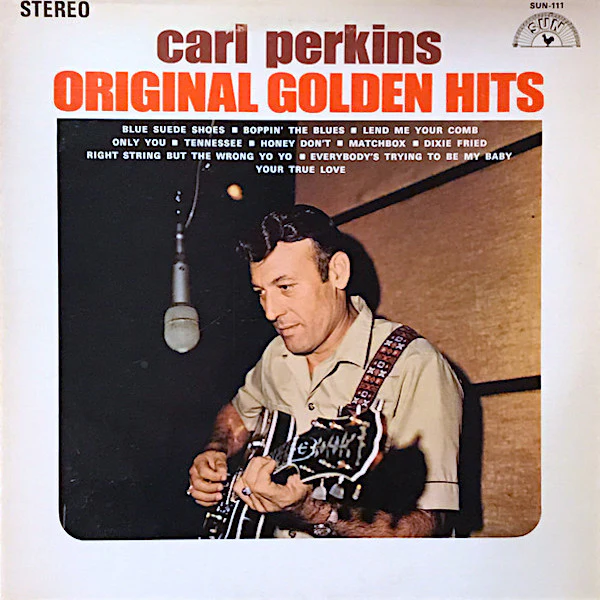 Different styles of songwriting can be detected in the finished product, such as Carl Perkins and the popular girl groups of the early '60s, but McCartney claims his initial inspiration as coming through an unlikely source. "At that point," McCartney continues in his book "The Lyrics," "it was a straight country-and-western love song. With songwriting, you conceive of it in one genre (because you can't conceive of things in thousands of genres), and you have one way of hearing it. If you get it right, however, you realize it has a certain elasticity; songs can be flexible. And when other members of The Beatles would get into the studio, often that's when that elasticity would kick in." When interviewed during their extensive American tour in the fall of 1964, Ringo stated that country music hadn’t influenced their sound at all. Little did he know that it actually had, as evidenced in "All My Loving." Different styles of songwriting can be detected in the finished product, such as Carl Perkins and the popular girl groups of the early '60s, but McCartney claims his initial inspiration as coming through an unlikely source. "At that point," McCartney continues in his book "The Lyrics," "it was a straight country-and-western love song. With songwriting, you conceive of it in one genre (because you can't conceive of things in thousands of genres), and you have one way of hearing it. If you get it right, however, you realize it has a certain elasticity; songs can be flexible. And when other members of The Beatles would get into the studio, often that's when that elasticity would kick in." When interviewed during their extensive American tour in the fall of 1964, Ringo stated that country music hadn’t influenced their sound at all. Little did he know that it actually had, as evidenced in "All My Loving."
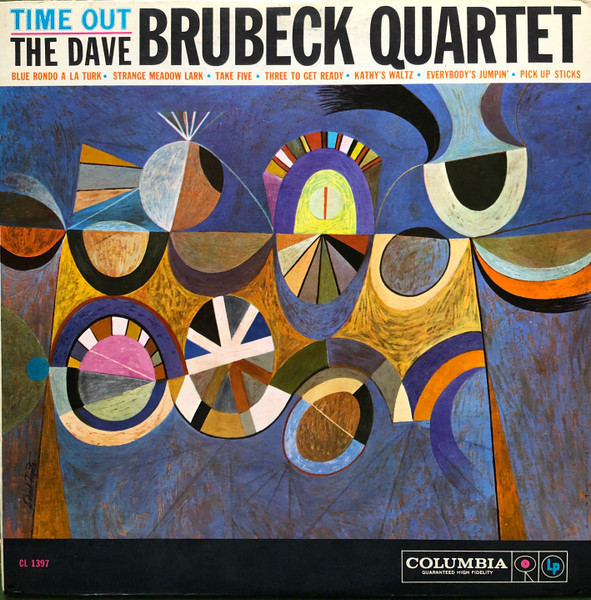 "It's a letter song," Paul continues, "in the same vein as the epistolary song 'P.S. I Love You'...It's part of a tradition of letter songs like Fats Waller's 'I'm Gonna Sit Right Down And Write Myself A Letter' or Pat Boone's 1956 hit 'I'll Be Home.' So, 'All My Loving' is a song that has a lineage." This lineage may also extend, if only subliminaly, with a classic original piece by Jazz artist Dave Brubeck called "Kathy's Waltz," this being contained on his 2x Platinum selling 1959 album "Time Out." The melody line Paul used for his opening phrase "Close you eyes and I'll kiss you, tomorrow..." appears to have come directly from this Jazz standard, a composition that McCartney quite probably was familiar with. "It's a letter song," Paul continues, "in the same vein as the epistolary song 'P.S. I Love You'...It's part of a tradition of letter songs like Fats Waller's 'I'm Gonna Sit Right Down And Write Myself A Letter' or Pat Boone's 1956 hit 'I'll Be Home.' So, 'All My Loving' is a song that has a lineage." This lineage may also extend, if only subliminaly, with a classic original piece by Jazz artist Dave Brubeck called "Kathy's Waltz," this being contained on his 2x Platinum selling 1959 album "Time Out." The melody line Paul used for his opening phrase "Close you eyes and I'll kiss you, tomorrow..." appears to have come directly from this Jazz standard, a composition that McCartney quite probably was familiar with.
Recording History
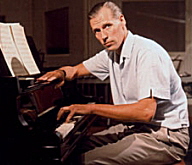 The second recording session for their second British album “With The Beatles” took place at EMI Studio Two on July 30th, 1963. This day, which was broken up into a morning and evening session, saw six songs being worked on. The afternoon session, which ran from 5 to 11 pm, saw five songs worked on, four of these being completed. After producer George Martin performed many piano overdubs for the song “Money,” The Beatles completed “Till There Was You,” “Roll Over Beethoven” and “It Won’t Be Long” before starting and completing “All My Loving” on the same day. "Take one" of the song began approximately at 10 pm, and by 11 pm the song was complete and ready for mixing. The second recording session for their second British album “With The Beatles” took place at EMI Studio Two on July 30th, 1963. This day, which was broken up into a morning and evening session, saw six songs being worked on. The afternoon session, which ran from 5 to 11 pm, saw five songs worked on, four of these being completed. After producer George Martin performed many piano overdubs for the song “Money,” The Beatles completed “Till There Was You,” “Roll Over Beethoven” and “It Won’t Be Long” before starting and completing “All My Loving” on the same day. "Take one" of the song began approximately at 10 pm, and by 11 pm the song was complete and ready for mixing.
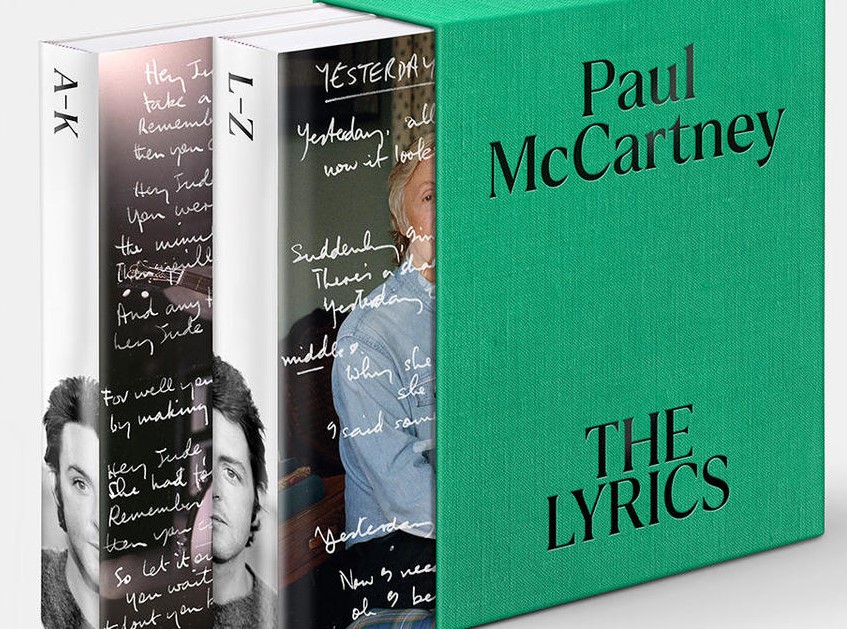 "The thing that strikes me about the 'All My Loving' recording is John's guitar part," Paul relates in his book "The Lyrics." "He's playing the chords as triplets. That was a last-minute idea, and it transforms the whole thing, giving it momentum. The song is obviously about someone leaving to go on a trip, and that driving rhythm of John's echoes the feeling of travel and motion. It sounds like a car's wheels on the motorway, which, if you can believe it, had only really become a thing in the UK at the end of the '50s. But, it was often like that when we were recording. One of us would come up with that little magic thing. It allowed the song to become what it needed to be." "The thing that strikes me about the 'All My Loving' recording is John's guitar part," Paul relates in his book "The Lyrics." "He's playing the chords as triplets. That was a last-minute idea, and it transforms the whole thing, giving it momentum. The song is obviously about someone leaving to go on a trip, and that driving rhythm of John's echoes the feeling of travel and motion. It sounds like a car's wheels on the motorway, which, if you can believe it, had only really become a thing in the UK at the end of the '50s. But, it was often like that when we were recording. One of us would come up with that little magic thing. It allowed the song to become what it needed to be."
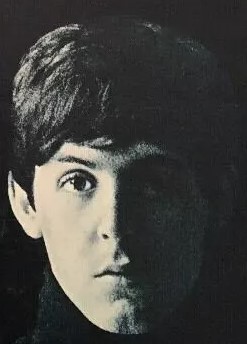 Takes one through 11 were needed to create a full band run-through of the song, which included McCartney’s vocals as well as all of the group on their usual instruments. This actually comprised ten takes, since there was no "take five." "Take 11" was considered the best. Since Paul wanted to double-track his vocals as well as provide his own harmony vocals on the third verse, the engineering team re-recorded "take 11" from the original two-track tape onto another two-track machine while Paul simultaneously recording his new vocal parts. Three attempts were made at perfecting his vocals, these being documented as "take 12," "take 13" and "take 14," "take 14" being deemed the best. This is the complete version of this classic track as we know it. Takes one through 11 were needed to create a full band run-through of the song, which included McCartney’s vocals as well as all of the group on their usual instruments. This actually comprised ten takes, since there was no "take five." "Take 11" was considered the best. Since Paul wanted to double-track his vocals as well as provide his own harmony vocals on the third verse, the engineering team re-recorded "take 11" from the original two-track tape onto another two-track machine while Paul simultaneously recording his new vocal parts. Three attempts were made at perfecting his vocals, these being documented as "take 12," "take 13" and "take 14," "take 14" being deemed the best. This is the complete version of this classic track as we know it.
 The mono mix of the song was done on August 21st, 1963, along with the rest of the songs that had been completed so far for the album. George Martin, along with engineers Norman Smith and Geoff Emerick, were the only ones present on this day. The same three EMI staff members, George Martin, Norman Smith and Geoff Emerick, created the stereo mix of the song on October 29th, 1963 along with the mysterious engineer with the initials B.T. The mono mix of the song was done on August 21st, 1963, along with the rest of the songs that had been completed so far for the album. George Martin, along with engineers Norman Smith and Geoff Emerick, were the only ones present on this day. The same three EMI staff members, George Martin, Norman Smith and Geoff Emerick, created the stereo mix of the song on October 29th, 1963 along with the mysterious engineer with the initials B.T.
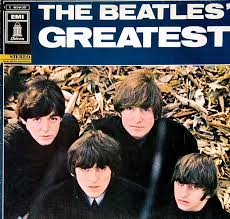 Because stereo phonographs were rare in the '60s, creating mono mixes was the priority. Stereo mixes were usually made very quickly and at the last minute. This being the case, the stereo mix of “All My Loving” was made inadvertently leaving in an introductory hi-hat count-in to the song. Most countries knew to omit this introduction when preparing their album, but in a few cases, such as the German version of their second album "With The Beatles," they left it in. This rare version of "All My Loving" was also included on the 1965 compilation album "Beatles' Greatest" in Germany and The Netherlands, in the UK 1980 "The Beatles Box," as well as various bootleg releases through the years. Because stereo phonographs were rare in the '60s, creating mono mixes was the priority. Stereo mixes were usually made very quickly and at the last minute. This being the case, the stereo mix of “All My Loving” was made inadvertently leaving in an introductory hi-hat count-in to the song. Most countries knew to omit this introduction when preparing their album, but in a few cases, such as the German version of their second album "With The Beatles," they left it in. This rare version of "All My Loving" was also included on the 1965 compilation album "Beatles' Greatest" in Germany and The Netherlands, in the UK 1980 "The Beatles Box," as well as various bootleg releases through the years.
.jpg) The Beatles also recorded "All My Loving" for BBC radio four times, the first being on December 17th, 1963 at Playhouse Theatre in London between 3 and 6:30 pm for Christmas edition of "Saturday Club," which was broadcast on December 21st between 10 am and noon. Then came the December 18th, 1963 recording of the song at BBC Paris Studio in London between 7 and 10:30 pm for the first edition of their new radio series “From Us To You,” which was produced by Bryant Marriott and broadcast on Boxing Day (December 26th) of 1963 between 10 am and noon. The Beatles also recorded "All My Loving" for BBC radio four times, the first being on December 17th, 1963 at Playhouse Theatre in London between 3 and 6:30 pm for Christmas edition of "Saturday Club," which was broadcast on December 21st between 10 am and noon. Then came the December 18th, 1963 recording of the song at BBC Paris Studio in London between 7 and 10:30 pm for the first edition of their new radio series “From Us To You,” which was produced by Bryant Marriott and broadcast on Boxing Day (December 26th) of 1963 between 10 am and noon.
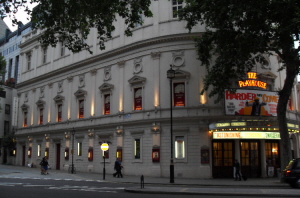 The Beatles recorded the song again on January 7th, 1964 at the Playhouse Theatre in London between 2:30 and 4 pm for another edition of “Saturday Club,” which was produced by Jimmy Grant and Bernie Andrews and was broadcast on February 15th between 10 am and noon. The final recording of "All My Loving" took place on February 28th, 1964 in Studio One of BBC Picadilly Studios in London between 6:30 and 9 pm for their second “From Us To You” special, which was produced by Bryant Marriott and broadcast on March 30th of that year between 10 am and noon, this recording being featured on the “Live at the BBC” album in 1994. The Beatles recorded the song again on January 7th, 1964 at the Playhouse Theatre in London between 2:30 and 4 pm for another edition of “Saturday Club,” which was produced by Jimmy Grant and Bernie Andrews and was broadcast on February 15th between 10 am and noon. The final recording of "All My Loving" took place on February 28th, 1964 in Studio One of BBC Picadilly Studios in London between 6:30 and 9 pm for their second “From Us To You” special, which was produced by Bryant Marriott and broadcast on March 30th of that year between 10 am and noon, this recording being featured on the “Live at the BBC” album in 1994.
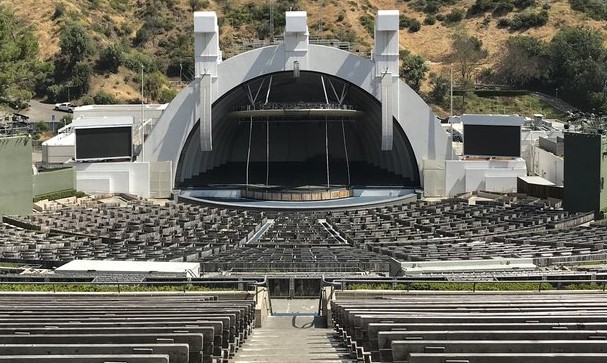 To be complete, we must also mention their appearance at the Hollywood Bowl in Los Angeles, California, on August 23rd, 1964. This show, which included "All My Loving," was recorded for an intended live album to be released for the 1964 Christmas season in the US. Their entire performance was recorded on a three-track recording machine and was produced by Capitol's vice president Voyle Gilmore and George Martin, Hugh Davies acting as engineer. To be complete, we must also mention their appearance at the Hollywood Bowl in Los Angeles, California, on August 23rd, 1964. This show, which included "All My Loving," was recorded for an intended live album to be released for the 1964 Christmas season in the US. Their entire performance was recorded on a three-track recording machine and was produced by Capitol's vice president Voyle Gilmore and George Martin, Hugh Davies acting as engineer.
 While this album didn't materialize at that time, all of the master tapes from their Hollywood Bowl performances were given to George Martin and engineer Geoff Emerick on January 18th, 1977 in order to create "The Beatles At The Hollywood Bowl," which was to be released later that year. Their work at AIR London Studios was complete by January 23rd, 1977, this performance of "All My Loving" being included therein. While this album didn't materialize at that time, all of the master tapes from their Hollywood Bowl performances were given to George Martin and engineer Geoff Emerick on January 18th, 1977 in order to create "The Beatles At The Hollywood Bowl," which was to be released later that year. Their work at AIR London Studios was complete by January 23rd, 1977, this performance of "All My Loving" being included therein.
 Sometime in 2023, Giles Martin was given the task of creating a "demix remix" of the song "All My Loving" for inclusion on the 50th Anniversary edition of the compilation album "The Beatles / 1962 - 1966" (aka "The Red Album"). With Peter Jackson's AI technology at his disposal, Giles Martin was able to utilize this "new machine-learning techology" so that "individual elements that were put to tape...and were therefore impossible to separate" could be "untangled, allowing Giles to put the original recordings back together with even greater clarity and impact," as stated by John Harris in the liner notes of the above mentioned album. The "clarity and impact" is especially witnessed here on "All My Loving," which is arguably the best presentation of the song to date. Sometime in 2023, Giles Martin was given the task of creating a "demix remix" of the song "All My Loving" for inclusion on the 50th Anniversary edition of the compilation album "The Beatles / 1962 - 1966" (aka "The Red Album"). With Peter Jackson's AI technology at his disposal, Giles Martin was able to utilize this "new machine-learning techology" so that "individual elements that were put to tape...and were therefore impossible to separate" could be "untangled, allowing Giles to put the original recordings back together with even greater clarity and impact," as stated by John Harris in the liner notes of the above mentioned album. The "clarity and impact" is especially witnessed here on "All My Loving," which is arguably the best presentation of the song to date.
Song Structure and Style
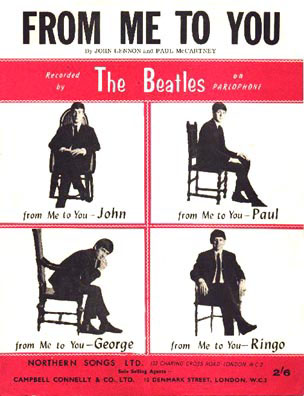 The songwriting style of Lennon and McCartney was beginning to mature and expand even as early as their second album, as can be seen with “All My Loving.” All of their original compositions on the first album were in the standard 'verse/ verse/ bridge/ verse' configuration (aaba) or variations thereof. Their third British single, “From Me To You” backed with “Thank You Girl,” also followed this format. The first change in this pattern occurred with their fourth single “She Loves You,” which, for the first time, introduced a “refrain” to their songwriting pallet, which was something they, no doubt, picked up from their cover version of “A Taste Of Honey” which appeared on their first album. The songwriting style of Lennon and McCartney was beginning to mature and expand even as early as their second album, as can be seen with “All My Loving.” All of their original compositions on the first album were in the standard 'verse/ verse/ bridge/ verse' configuration (aaba) or variations thereof. Their third British single, “From Me To You” backed with “Thank You Girl,” also followed this format. The first change in this pattern occurred with their fourth single “She Loves You,” which, for the first time, introduced a “refrain” to their songwriting pallet, which was something they, no doubt, picked up from their cover version of “A Taste Of Honey” which appeared on their first album.
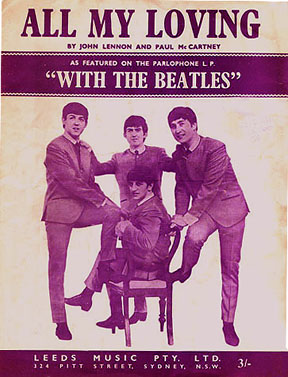 Now, for the second time on their second album, a "refrain" is used to great effect on the song “All My Loving.” Like “All I’ve Got To Do” before it, the refrain is repeated twice in the song and finishes off the pattern of the song. “All My Loving” also contains a bridge, which is heard as a guitar solo played by George Harrison. Up to this point, the solo section in Lennon / McCartney songs occur using the chord pattern of the verse (“I Saw Her Standing There”) or even the bridge (“Love Me Do”), but in this case the solo is performed using a unique pattern of chords not heard elsewhere in the song. This can easily be viewed as a bridge, since it is a transitory passage that connects the first refrain with the third verse. Therefore, “All My Loving” follows the format of 'verse/ verse/ refrain/ bridge/ verse/ refrain' or (aabcab). To spice up the structure, the final refrain is doubled in length to create what can be termed as an “outro.” Now, for the second time on their second album, a "refrain" is used to great effect on the song “All My Loving.” Like “All I’ve Got To Do” before it, the refrain is repeated twice in the song and finishes off the pattern of the song. “All My Loving” also contains a bridge, which is heard as a guitar solo played by George Harrison. Up to this point, the solo section in Lennon / McCartney songs occur using the chord pattern of the verse (“I Saw Her Standing There”) or even the bridge (“Love Me Do”), but in this case the solo is performed using a unique pattern of chords not heard elsewhere in the song. This can easily be viewed as a bridge, since it is a transitory passage that connects the first refrain with the third verse. Therefore, “All My Loving” follows the format of 'verse/ verse/ refrain/ bridge/ verse/ refrain' or (aabcab). To spice up the structure, the final refrain is doubled in length to create what can be termed as an “outro.”
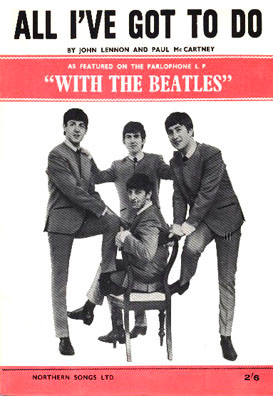 The song begins abruptly with the first verse without any introduction whatsoever, not even an introductory chord as on “All I’ve Got To Do.” Actually, McCartney’s double-tracked voice is the first thing heard, since the actual melody line of the verse begins half of a measure before the first measure begins. This 16-measure verse is accentuated by Paul’s melody line which cascades up and down one entire octave, but not exceeding it. The last measure of the verse comprises the common Beatles “break” as well as the first two words of the second verse, which immediately follows. The song begins abruptly with the first verse without any introduction whatsoever, not even an introductory chord as on “All I’ve Got To Do.” Actually, McCartney’s double-tracked voice is the first thing heard, since the actual melody line of the verse begins half of a measure before the first measure begins. This 16-measure verse is accentuated by Paul’s melody line which cascades up and down one entire octave, but not exceeding it. The last measure of the verse comprises the common Beatles “break” as well as the first two words of the second verse, which immediately follows.
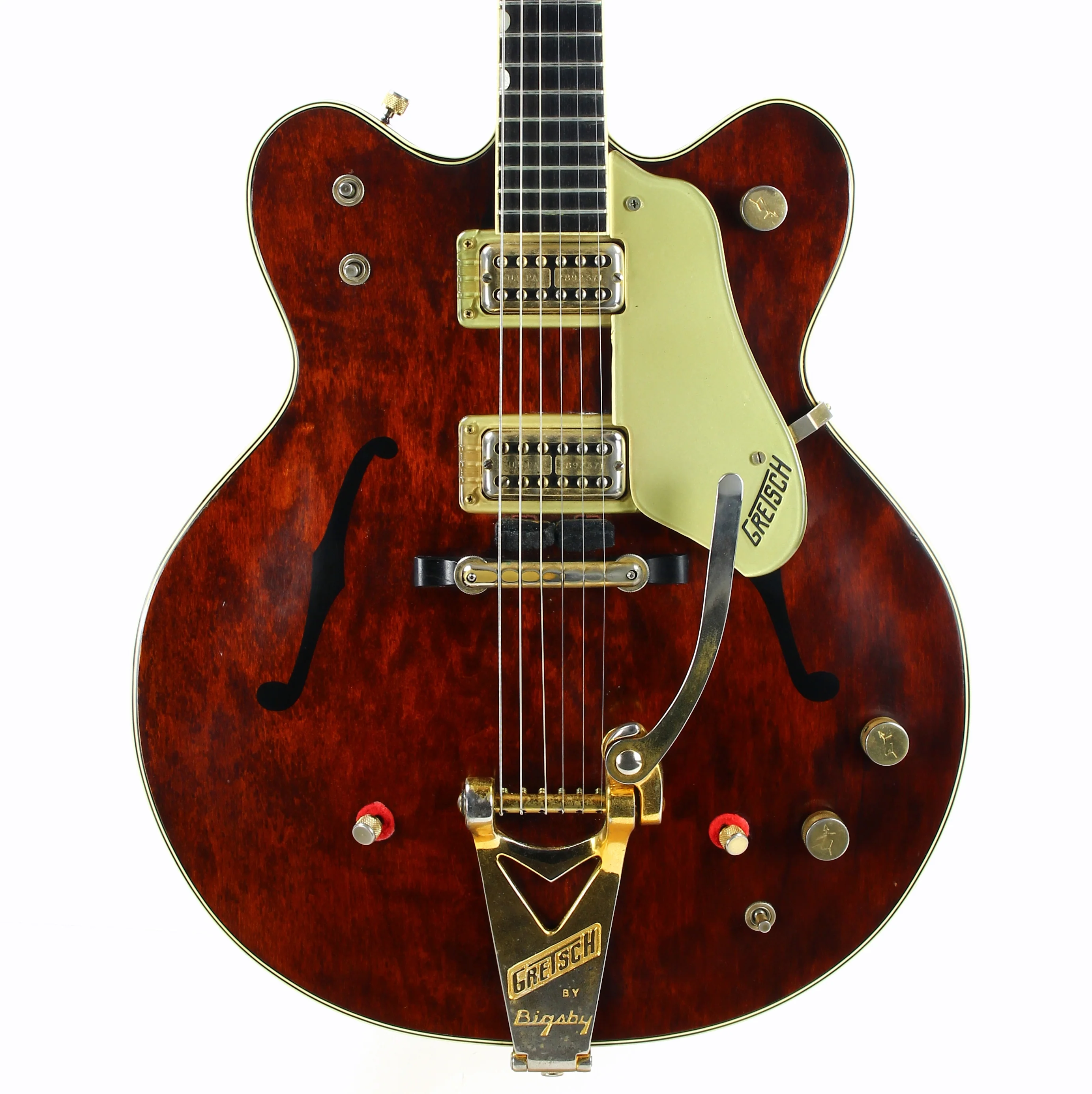 The second verse is identical in structure and melody line, only differing by a new set of lyrics which, like the first verse, ends with the title of the song being heard. After the break at the end of the second verse, we enter into the first refrain, which acts as the true hook-line of the song, repeating the title twice. Vocal harmony “oohs” are now heard throughout the refrain performed by Lennon and Harrison. This eight measure refrain also ends in a “break,” which actually begins the guitar solo heard during the entire bridge, which also comprises eight measures, the eighth measure being another “break.” The second verse is identical in structure and melody line, only differing by a new set of lyrics which, like the first verse, ends with the title of the song being heard. After the break at the end of the second verse, we enter into the first refrain, which acts as the true hook-line of the song, repeating the title twice. Vocal harmony “oohs” are now heard throughout the refrain performed by Lennon and Harrison. This eight measure refrain also ends in a “break,” which actually begins the guitar solo heard during the entire bridge, which also comprises eight measures, the eighth measure being another “break.”
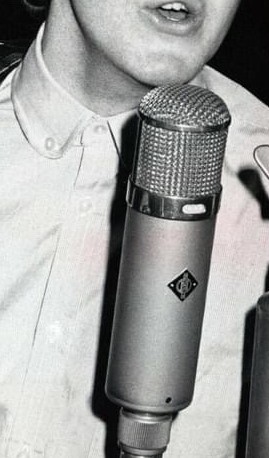 The third verse is actually a repeat of the first verse using the same lyrics, the only difference being that we now hear Paul’s overdubbed harmony throughout the verse. After the “break” at the end of the verse, we enter into the final refrain which is identical to the first except that it is actually doubled in length to finish off the song. This sixteen-measure refrain sounds as if it is repeating the refrain twice, but it actually results in an accentuated McCartney vocal which finally takes the singer above the limited octave range of the song, even into a short falsetto “ooh” which has by now become a Beatles trademark. The final ringing bass note ends this classic song on a triumphant and satisfying note. The third verse is actually a repeat of the first verse using the same lyrics, the only difference being that we now hear Paul’s overdubbed harmony throughout the verse. After the “break” at the end of the verse, we enter into the final refrain which is identical to the first except that it is actually doubled in length to finish off the song. This sixteen-measure refrain sounds as if it is repeating the refrain twice, but it actually results in an accentuated McCartney vocal which finally takes the singer above the limited octave range of the song, even into a short falsetto “ooh” which has by now become a Beatles trademark. The final ringing bass note ends this classic song on a triumphant and satisfying note.
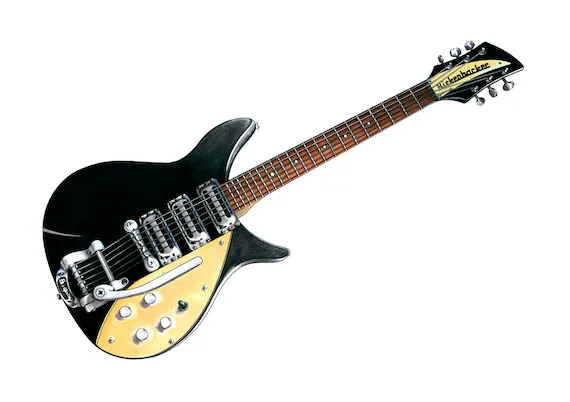 McCartney is truly the master and commander of the song performance-wise, as his vocal delivery, although penetrating the lowest registers of his range, is delivered with convincing expressiveness throughout. Singing in this lower tone may have been a little uncomfortable for Paul, which resulted in some slight pitch problems on the recording, but it didn’t stop the group from performing the song extensively throughout their early touring months. McCartney is truly the master and commander of the song performance-wise, as his vocal delivery, although penetrating the lowest registers of his range, is delivered with convincing expressiveness throughout. Singing in this lower tone may have been a little uncomfortable for Paul, which resulted in some slight pitch problems on the recording, but it didn’t stop the group from performing the song extensively throughout their early touring months.
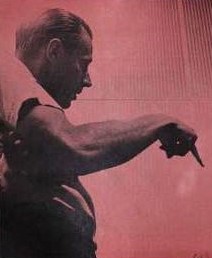 Also to be noted is Paul McCartney’s "spot on" harmony work on the third verse, which was overdubbed at the end of the session. It was easier for Paul to overdub it himself, since he was a natural for picking out harmony, unlike both John and George who performed well in this capacity only after much detailed coaching from George Martin. During live performances of the song, Harrison provided the harmony on the third verse because of Lennon concentrating on the fast rhythm guitar triplets he performed during the song's verses. Also to be noted is the simplistic nature manifested in the refrains, as Paul gives the double tracking of his vocals a rest. His single voice is heard, allowing for the true tones of John and George’s harmony background vocals to create a fullness. Also to be noted is Paul McCartney’s "spot on" harmony work on the third verse, which was overdubbed at the end of the session. It was easier for Paul to overdub it himself, since he was a natural for picking out harmony, unlike both John and George who performed well in this capacity only after much detailed coaching from George Martin. During live performances of the song, Harrison provided the harmony on the third verse because of Lennon concentrating on the fast rhythm guitar triplets he performed during the song's verses. Also to be noted is the simplistic nature manifested in the refrains, as Paul gives the double tracking of his vocals a rest. His single voice is heard, allowing for the true tones of John and George’s harmony background vocals to create a fullness.
 McCartney definitely shines with his bass guitar performance as well. Usually quite low in the mix during these early Beatles recordings, Paul’s bass lines are easily discernable, making this recording an exceptional triumph. The wide-range walking bass lines help create an impressive tightness and cohesiveness to the arrangement. McCartney definitely shines with his bass guitar performance as well. Usually quite low in the mix during these early Beatles recordings, Paul’s bass lines are easily discernable, making this recording an exceptional triumph. The wide-range walking bass lines help create an impressive tightness and cohesiveness to the arrangement.
George Harrison would next be worthy of mention because of his stellar Carl Perkins-style solo, which comes across both joyous and irresistible. McCartney’s insistence on planned guitar solos for his compositions is well-founded, as evidenced in this case. An adlib creation by Harrison, as he was prone to present, wouldn’t have complimented the well-structured atmosphere that this song required. Also of note, George’s rhythmic guitar helps create the pleasantly bright swing beat of the song. Harrison could also be counted on to produce adequate background harmony, as was heard during the song's refrains.
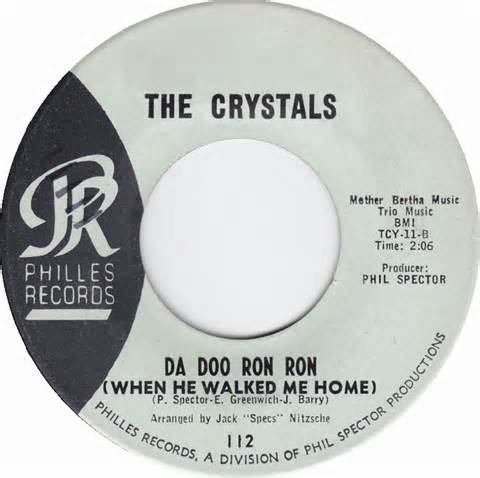 John’s fast paced rhythm triplets, possibly derived from listening to the current American hit “Do Doo Ron Ron” by The Crystals, were an impressive addition to the rhythm of the song and provided a uniqueness to the band's arrangement. "You try doing that for three minutes...It's a difficult part," Paul tells interviewer Rick Rubin in the 2021 Hulu series "McCartney 3,2,1." Regarding the contrast between both of Lennon's distictive guitar parts in the song, McCartney states: "That was a really good thing that did happen. We all knew we had the freedom to goof around." John’s fast paced rhythm triplets, possibly derived from listening to the current American hit “Do Doo Ron Ron” by The Crystals, were an impressive addition to the rhythm of the song and provided a uniqueness to the band's arrangement. "You try doing that for three minutes...It's a difficult part," Paul tells interviewer Rick Rubin in the 2021 Hulu series "McCartney 3,2,1." Regarding the contrast between both of Lennon's distictive guitar parts in the song, McCartney states: "That was a really good thing that did happen. We all knew we had the freedom to goof around."
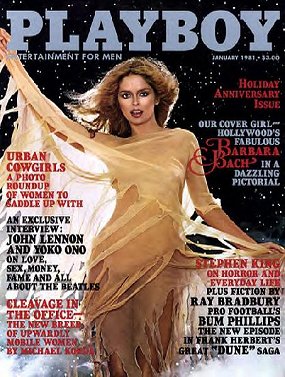 "I play a pretty mean guitar in back," Lennon acknowledged in his Playboy interview in 1980. John could also be counted on to provide well-crafted harmony work, as can be heard during the song's refrain, once the harmony line was drilled into his head through rehearsal. "I play a pretty mean guitar in back," Lennon acknowledged in his Playboy interview in 1980. John could also be counted on to provide well-crafted harmony work, as can be heard during the song's refrain, once the harmony line was drilled into his head through rehearsal.
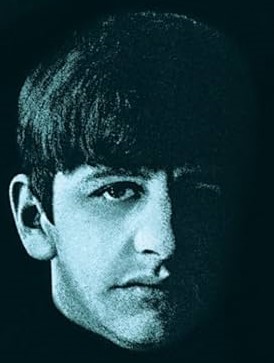 The drum work required here is excellently performed by Ringo Starr as if he was born to play this swing style. This aspect comes across as perfectly performed and natural, right down to the snare accents at the end of each verse. The drum arrangement is changed during the refrain as Ringo strikes the snare on each beat of each measure, which he accidentally begins to do during the first measure of the second verse (probably getting mixed up after eleven takes of the song). The drum work required here is excellently performed by Ringo Starr as if he was born to play this swing style. This aspect comes across as perfectly performed and natural, right down to the snare accents at the end of each verse. The drum arrangement is changed during the refrain as Ringo strikes the snare on each beat of each measure, which he accidentally begins to do during the first measure of the second verse (probably getting mixed up after eleven takes of the song).
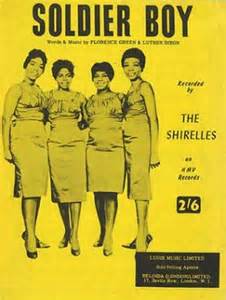 As detailed above, "All My Loving" has been viewed as a “letter song” because of the farewell message heard. Many “letter” type songs were popular in the early '60s, such as “Soldier Boy” by one of The Beatles favorite girl groups, The Shirelles, which also inspired The Beatles “P.S. I Love You.” The lyrics, while quite simple and self-explanatory, convey a convincing message which exudes sincerity. As detailed above, "All My Loving" has been viewed as a “letter song” because of the farewell message heard. Many “letter” type songs were popular in the early '60s, such as “Soldier Boy” by one of The Beatles favorite girl groups, The Shirelles, which also inspired The Beatles “P.S. I Love You.” The lyrics, while quite simple and self-explanatory, convey a convincing message which exudes sincerity.
The historical impact "All My Loving" has had in the career of The Beatles can possibly be evidenced by the chilling fact that, according to TV producer Alan Weiss, this song happened to have been playing on the sound system in the emergency room at Roosevelt Hospital in Manhattan, New York when John Lennon was pronounced dead on December 8th, 1980.
American Releases
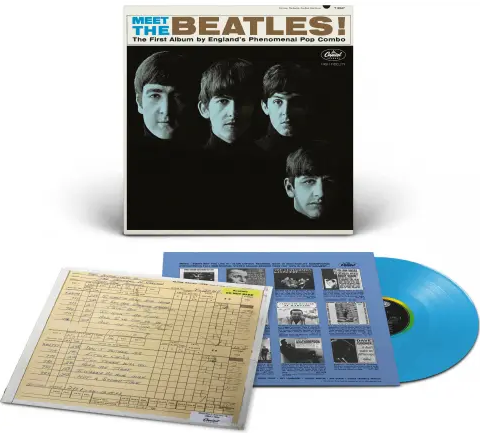 “All My Loving” was truly a highlight for American record buyers as a track on their first Capitol album “Meet The Beatles!” released on January 20th, 1964. Incidentally, mono copies of this album contained a "Type B" foldover mix of the song created by Capitol that combined both channels of the stereo mix into a single mono channel instead of the legitimate 1963 mono mix originally created by George Martin. This album was finally released on an individual compact disc on January 21st, 2014, both the mono and stereo mixes being contained on a single CD. A mono edition of the album on opaque blue vinyl was then released on November 22nd, 2024 for sale exclusively at Target stores. “All My Loving” was truly a highlight for American record buyers as a track on their first Capitol album “Meet The Beatles!” released on January 20th, 1964. Incidentally, mono copies of this album contained a "Type B" foldover mix of the song created by Capitol that combined both channels of the stereo mix into a single mono channel instead of the legitimate 1963 mono mix originally created by George Martin. This album was finally released on an individual compact disc on January 21st, 2014, both the mono and stereo mixes being contained on a single CD. A mono edition of the album on opaque blue vinyl was then released on November 22nd, 2024 for sale exclusively at Target stores.
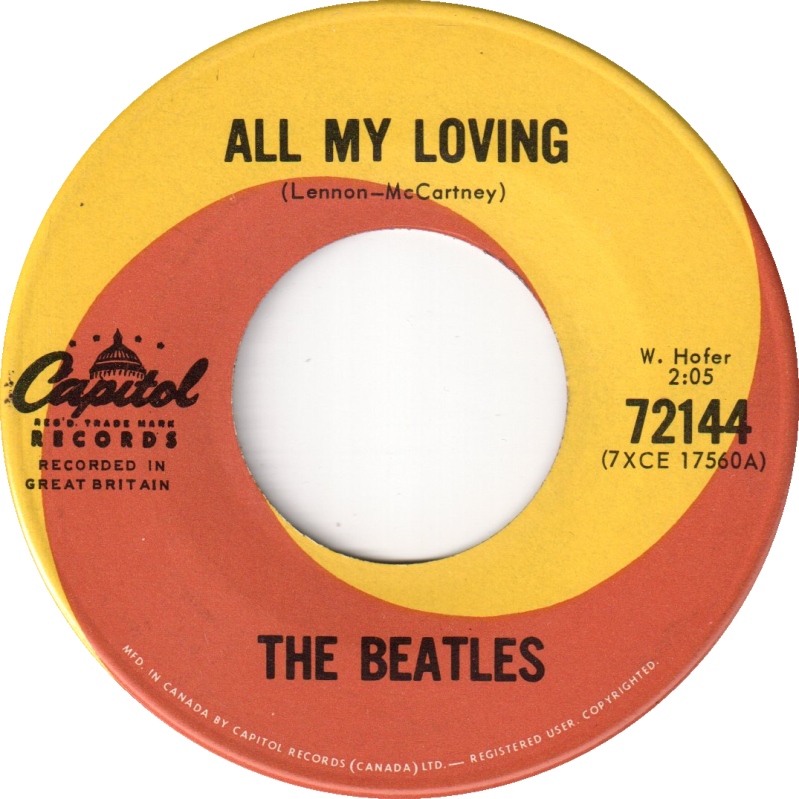 The song had all the hallmarks of a true hit, but it was never released as a single in the US. That is not to say that you couldn’t purchase it as a single in America in the early Beatlemania year of 1964. It was released as a single in Canada and was imported into America, selling enough here to chart on the Billboard Hot 100 throughout late March and all of April, peaking at #45. The song had all the hallmarks of a true hit, but it was never released as a single in the US. That is not to say that you couldn’t purchase it as a single in America in the early Beatlemania year of 1964. It was released as a single in Canada and was imported into America, selling enough here to chart on the Billboard Hot 100 throughout late March and all of April, peaking at #45.
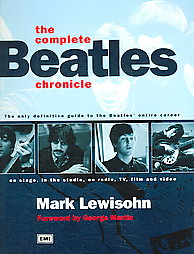 "All My Loving" may not have been released as a single in the UK or the US, but it took on a life of its own. Paul explains this in Mark Lewisohn's book "The Complete Beatles Recording Sessions." "The first person I heard single it out was the disc jockey David Jacobs, who was pretty hip. Still is actually, he knows pop music. He was always quite an expert, for one of the older generation. I remember him singling it out on his radio show and I think from that moment it did become a big favorite for people. And I heard it differently. Till then I'd heard it as an album track. But when he played it on his radio show, and it went over to however many million people on network BBC, it was like, 'Wow! That is a good one.' I always liked it." "All My Loving" may not have been released as a single in the UK or the US, but it took on a life of its own. Paul explains this in Mark Lewisohn's book "The Complete Beatles Recording Sessions." "The first person I heard single it out was the disc jockey David Jacobs, who was pretty hip. Still is actually, he knows pop music. He was always quite an expert, for one of the older generation. I remember him singling it out on his radio show and I think from that moment it did become a big favorite for people. And I heard it differently. Till then I'd heard it as an album track. But when he played it on his radio show, and it went over to however many million people on network BBC, it was like, 'Wow! That is a good one.' I always liked it."
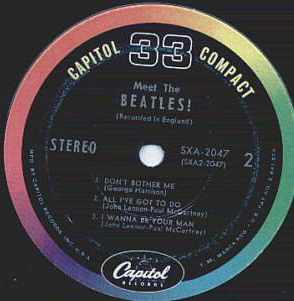 Also issued in January of 1964 was the song's second US release, which was the Compact 33 jukebox disc for the “Meet The Beatles!” album. Although it wasn’t available for sale to the public, it graced many an American jukebox, having “All My Loving” as the third (and final) track of side one. Also issued in January of 1964 was the song's second US release, which was the Compact 33 jukebox disc for the “Meet The Beatles!” album. Although it wasn’t available for sale to the public, it graced many an American jukebox, having “All My Loving” as the third (and final) track of side one.
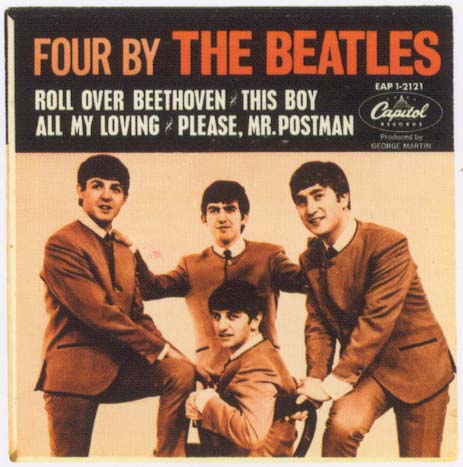 In imitation of Britain including the song on an EP, America tried the same thing, with nowhere near the same sales response. The Capitol EP “Four By The Beatles” included the song to capitalize on the import sales of the Canadian single but, because the song had already sold in the millions on the “Meet The Beatles!” album by the time the EP came out on May 11th, 1964, this release of the song failed to make much of an impact. The EP only spent three weeks on the Billboard singles chart, peaking at #92. In imitation of Britain including the song on an EP, America tried the same thing, with nowhere near the same sales response. The Capitol EP “Four By The Beatles” included the song to capitalize on the import sales of the Canadian single but, because the song had already sold in the millions on the “Meet The Beatles!” album by the time the EP came out on May 11th, 1964, this release of the song failed to make much of an impact. The EP only spent three weeks on the Billboard singles chart, peaking at #92.
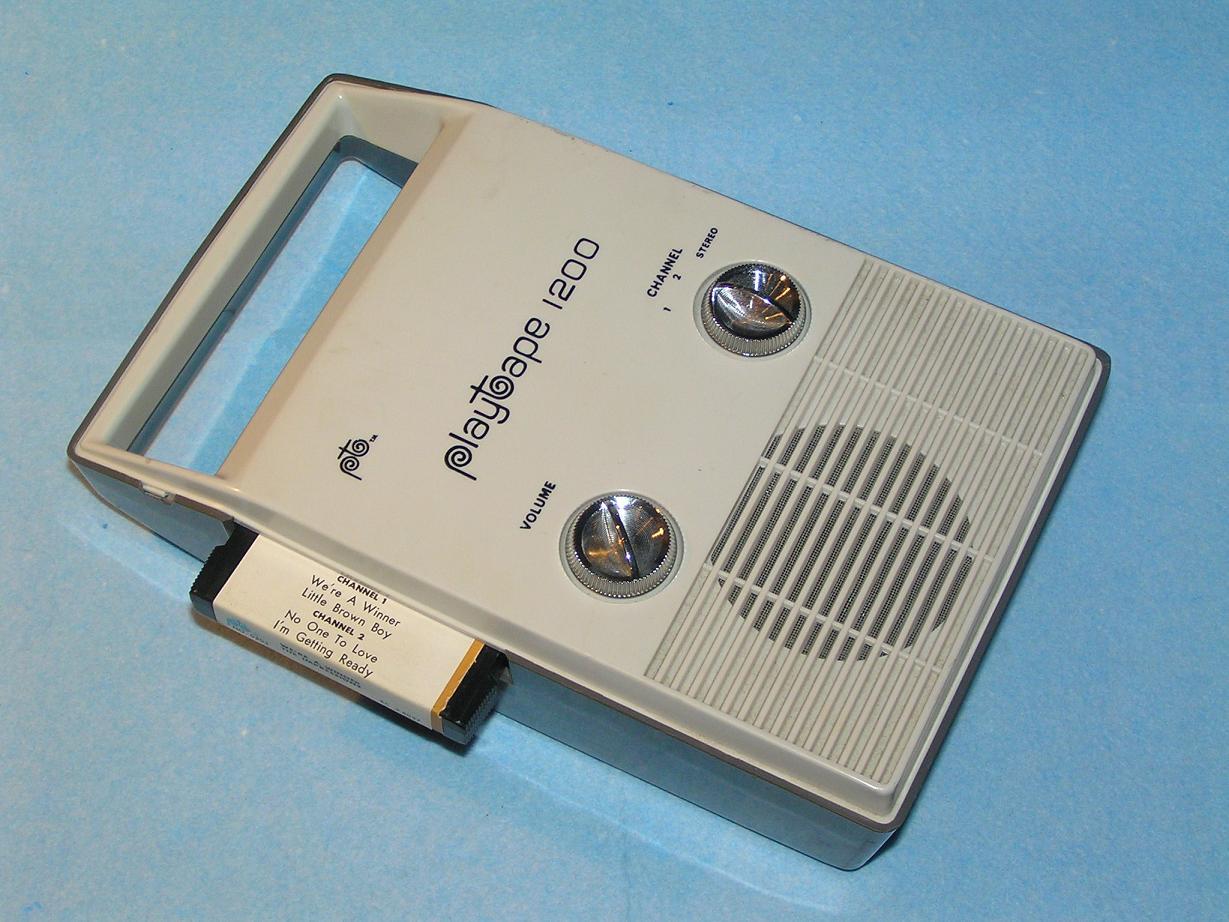 Sometime in 1967, Capitol released Beatles music on a brand new but short-lived format called "Playtapes." These tape cartridges did not have the capability to include entire albums, so two truncated four-song versions of "Meet The Beatles" were released in this portable format, "All My Loving" being on one of these releases. These "Playtapes" have become highly collectable today. Sometime in 1967, Capitol released Beatles music on a brand new but short-lived format called "Playtapes." These tape cartridges did not have the capability to include entire albums, so two truncated four-song versions of "Meet The Beatles" were released in this portable format, "All My Loving" being on one of these releases. These "Playtapes" have become highly collectable today.
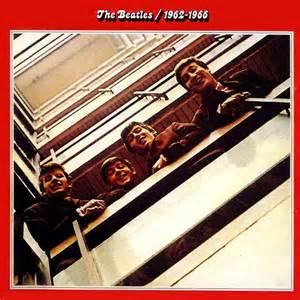 The next release of the song takes us all the way to April 2nd, 1973, with the Apple album release “The Beatles / 1962-1966” (aka “The Red Album”). It was chosen as one of only seven songs on this "greatest hits" compilation album that were not officially released as a single in America. The million selling album peaked at #3 on the Billboard album chart and, with “The Blue Album,” began a resurgence of Beatlemania for the '70s in the US. The album was released on compact disc in 1993, which marked the first time “All My Loving” was issued in stereo on CD. The compilation set was then remastered and re-released on October 19th, 2010. The next release of the song takes us all the way to April 2nd, 1973, with the Apple album release “The Beatles / 1962-1966” (aka “The Red Album”). It was chosen as one of only seven songs on this "greatest hits" compilation album that were not officially released as a single in America. The million selling album peaked at #3 on the Billboard album chart and, with “The Blue Album,” began a resurgence of Beatlemania for the '70s in the US. The album was released on compact disc in 1993, which marked the first time “All My Loving” was issued in stereo on CD. The compilation set was then remastered and re-released on October 19th, 2010.
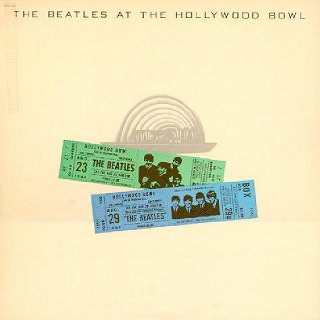 The next release was on May 4th, 1977 on the Capitol album “The Beatles At The Hollywood Bowl.” They performed the song during their first appearance at that venue on August 23rd, 1964. The album went platinum and peaked at #2 on the US Billboard charts. It eventually was remastered by Giles Martin and re-released under the slightly new title "Live At The Hollywood Bowl" on September 9th, 2016. The next release was on May 4th, 1977 on the Capitol album “The Beatles At The Hollywood Bowl.” They performed the song during their first appearance at that venue on August 23rd, 1964. The album went platinum and peaked at #2 on the US Billboard charts. It eventually was remastered by Giles Martin and re-released under the slightly new title "Live At The Hollywood Bowl" on September 9th, 2016.
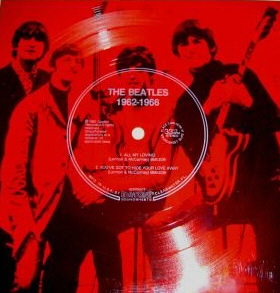 Capitol teamed up with Evatone Records to release "All My Loving" with "You've Got To Hide Your Love Away" on a flexi-disc as a promotion at American record stores. This limited edition disc, released in 1982, was produced in three forms; one for Musicland stores, one for Discount stores, and one for Sam Goody stores, all of which are quite the collectors' items today. Capitol teamed up with Evatone Records to release "All My Loving" with "You've Got To Hide Your Love Away" on a flexi-disc as a promotion at American record stores. This limited edition disc, released in 1982, was produced in three forms; one for Musicland stores, one for Discount stores, and one for Sam Goody stores, all of which are quite the collectors' items today.
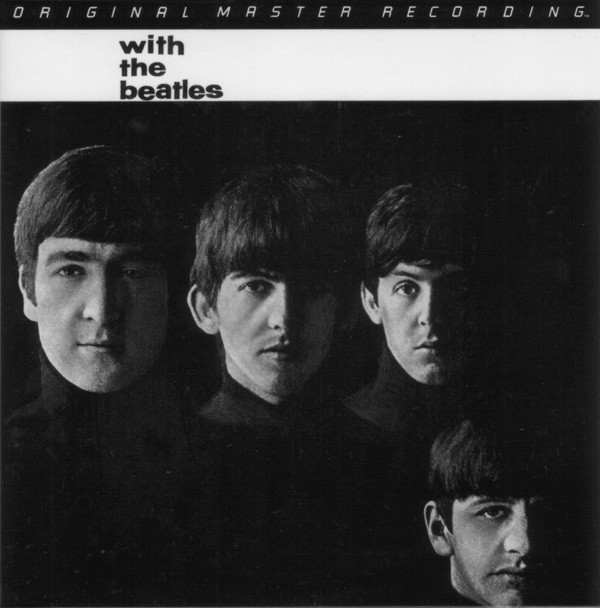 The first time the original British "With The Beatles" album was made available in the US was the "Original Master Recording" vinyl edition released through Mobile Fidelity Sound Lab in January of 1987. This album included "All My Loving" and was prepared utilizing half-speed mastering technology from the original master tapes on loan from Abbey Road. This title had a limited production, reportedly because of a damaged metal part that was needed for pressing the vinyl. Therefore, this album is said to be the rarest and most valuable Beatles album in the “Original Master Recording” series. The first time the original British "With The Beatles" album was made available in the US was the "Original Master Recording" vinyl edition released through Mobile Fidelity Sound Lab in January of 1987. This album included "All My Loving" and was prepared utilizing half-speed mastering technology from the original master tapes on loan from Abbey Road. This title had a limited production, reportedly because of a damaged metal part that was needed for pressing the vinyl. Therefore, this album is said to be the rarest and most valuable Beatles album in the “Original Master Recording” series.
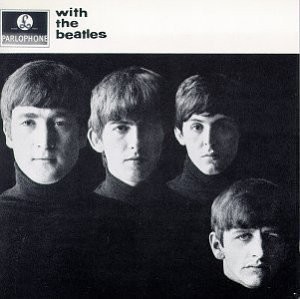 February 26th, 1987 was when the original British "With The Beatles" hit the US in the compact disc format. This CD, which included "All My Loving," was only released in mono, a vinyl edition coming out on July 21st, 1987. A remastered stereo CD version hit the market on September 9th, 2009, the stereo vinyl edition being released on November 13th, 2012. February 26th, 1987 was when the original British "With The Beatles" hit the US in the compact disc format. This CD, which included "All My Loving," was only released in mono, a vinyl edition coming out on July 21st, 1987. A remastered stereo CD version hit the market on September 9th, 2009, the stereo vinyl edition being released on November 13th, 2012.
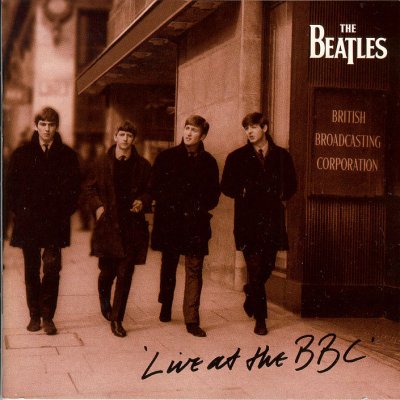 There were three releases of the song in the '90s, the first being on June 30th, 1992. This was the box set “Compact Disc EP Collection,” which featured the mono mix as heard on the original British “All My Loving” EP released on February 7th, 1964. Next came the million-selling “Live at the BBC” album which was released on December 6th, 1994 and contained the version recorded on February 28th, 1964 for the second installment of the BBC radio show “From Us To You.” This album hit #3 on the Billboard album chart. On November 11th, 2013, it was remastered, re-packaged and re-released. Then, the long awaited “Anthology 1” was released on November 21st, 1995. The version on this album is the historic first song The Beatles performed on the Ed Sullivan Show on February 9th, 1964, and includes a brief introduction from Ed Sullivan himself. This album hit #1 on the Billboard album chart. There were three releases of the song in the '90s, the first being on June 30th, 1992. This was the box set “Compact Disc EP Collection,” which featured the mono mix as heard on the original British “All My Loving” EP released on February 7th, 1964. Next came the million-selling “Live at the BBC” album which was released on December 6th, 1994 and contained the version recorded on February 28th, 1964 for the second installment of the BBC radio show “From Us To You.” This album hit #3 on the Billboard album chart. On November 11th, 2013, it was remastered, re-packaged and re-released. Then, the long awaited “Anthology 1” was released on November 21st, 1995. The version on this album is the historic first song The Beatles performed on the Ed Sullivan Show on February 9th, 1964, and includes a brief introduction from Ed Sullivan himself. This album hit #1 on the Billboard album chart.
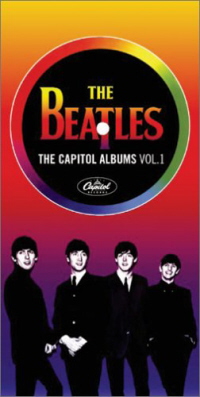 November 15th, 2004 was the release date for the box set “The Capitol Albums, Vol. 1,” which featured the song in stereo and "Type B" foldover mono as heard on the original "Meet The Beatles" album. A few weeks prior to the release of the box set mentioned above, Capitol released a CD Sampler with eight songs contained in the set. Both the original stereo and mono mixes of “All My Loving” were contained on this promo disc. November 15th, 2004 was the release date for the box set “The Capitol Albums, Vol. 1,” which featured the song in stereo and "Type B" foldover mono as heard on the original "Meet The Beatles" album. A few weeks prior to the release of the box set mentioned above, Capitol released a CD Sampler with eight songs contained in the set. Both the original stereo and mono mixes of “All My Loving” were contained on this promo disc.
September 9th, 2009, saw the release of the CD box set "The Beatles In Mono," which featured the song as part of the original "With The Beatles" album. Also released on September 9th, 2009, in promotion of the remastered Beatles catalog, the "09.09.09 Sampler" was distributed to retailers and radio programmers, "All My Loving" being featured therein. The vinyl edition of the box set first came out on September 9th, 2014.
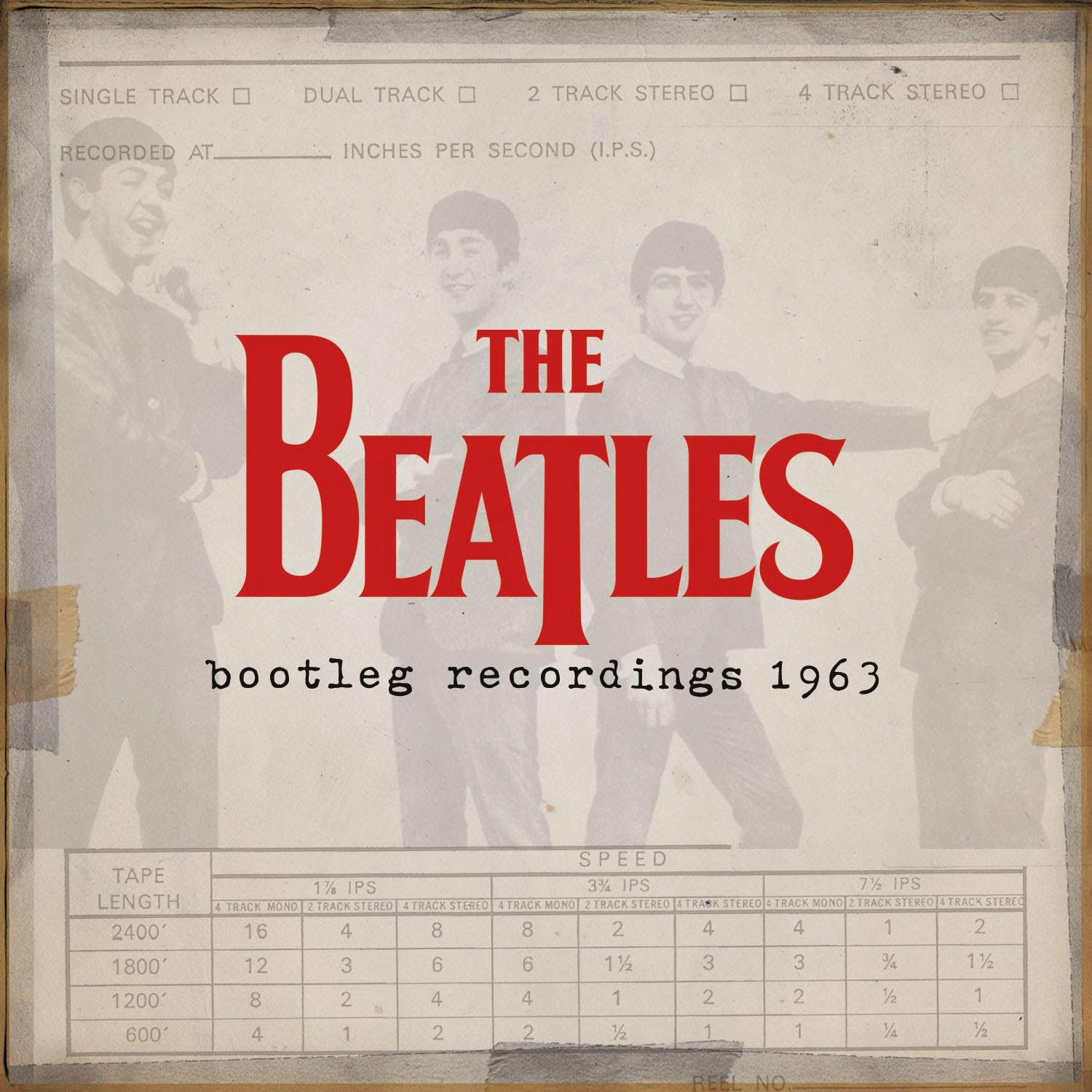 On December 17th, 2013, iTunes released a 59 track compilation album entitled "Bootleg Recordings 1963" only available on their downloading platform, their BBC performance of "All My Loving" on December 26th, 1963 for the program "From Us To You" being included therein. The purpose of this release was to extend the copyright of these recordings under European Union law from 50 years (which would have expired at the end of 2013) to 70 years (until 2033), this being considered an official release. This compilation album was only available in the US on that date to those in the know for a number of hours for $39.99 in its entirety or to be purchased as individual tracks, but was later made available for purchase as well. On December 17th, 2013, iTunes released a 59 track compilation album entitled "Bootleg Recordings 1963" only available on their downloading platform, their BBC performance of "All My Loving" on December 26th, 1963 for the program "From Us To You" being included therein. The purpose of this release was to extend the copyright of these recordings under European Union law from 50 years (which would have expired at the end of 2013) to 70 years (until 2033), this being considered an official release. This compilation album was only available in the US on that date to those in the know for a number of hours for $39.99 in its entirety or to be purchased as individual tracks, but was later made available for purchase as well.
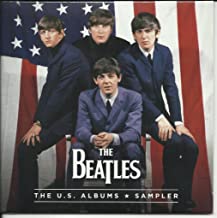 As a promotional tool for the 2014 box set "The US Albums," a 25-song sampler CD was manufactured by Apple for a limited release on January 21st, 2014, this promo disc containing the mono mix of "All My Loving." As a promotional tool for the 2014 box set "The US Albums," a 25-song sampler CD was manufactured by Apple for a limited release on January 21st, 2014, this promo disc containing the mono mix of "All My Loving."
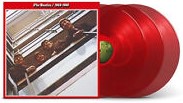 A 50th Anniversay edition of the compilation album "The Beatles / 1962 - 1966" (aka "The Red Album") was released on November 10th, 2023, the new stereo mix of "All My Loving," as detailed above, being included. This expanded release included 12 additional songs for a total of 38 tracks, and was made available as a double CD and as a triple vinyl release on both black and red vinyl. A 50th Anniversay edition of the compilation album "The Beatles / 1962 - 1966" (aka "The Red Album") was released on November 10th, 2023, the new stereo mix of "All My Loving," as detailed above, being included. This expanded release included 12 additional songs for a total of 38 tracks, and was made available as a double CD and as a triple vinyl release on both black and red vinyl.
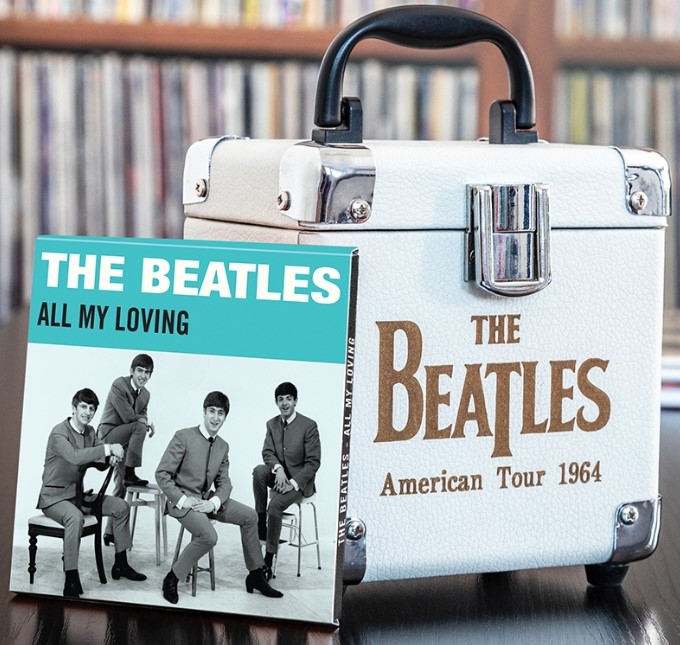 On November 29th, 2024, Apple Records released "All My Loving" as a 3" single on Record Store Day as an "RSD Exclusive Release." This is a limited edition release of only 2500 copies that can only be played on 3" turntables, Crosley Manufacturing offering a special Beatles Mini Turntable that was released earlier this year, as well as a record carrying case to accomodate all five of the 3" Beatles singles released thus far. These releases were made in celebration of the 60th Anniversary of The Beatles first appearance on the Ed Sullivan Show on February 9th, 1964, these five 3" singles corresponding to songs the group performed on that historic day. On November 29th, 2024, Apple Records released "All My Loving" as a 3" single on Record Store Day as an "RSD Exclusive Release." This is a limited edition release of only 2500 copies that can only be played on 3" turntables, Crosley Manufacturing offering a special Beatles Mini Turntable that was released earlier this year, as well as a record carrying case to accomodate all five of the 3" Beatles singles released thus far. These releases were made in celebration of the 60th Anniversary of The Beatles first appearance on the Ed Sullivan Show on February 9th, 1964, these five 3" singles corresponding to songs the group performed on that historic day.
Live Performances
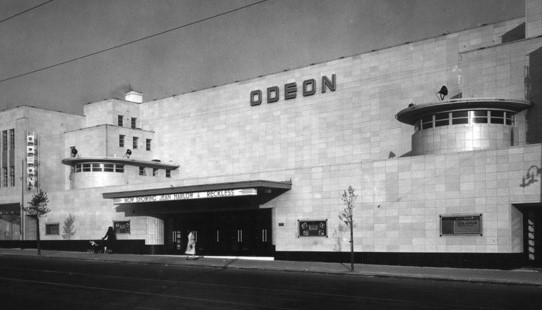 Although not chosen as a single, The Beatles did know that they had something special with "All My Loving." Therefore, it became part of their live repertoire for nearly a full year afterwards. They started performing the song live during their "Autumn Tour," which began at Cheltenham's Odeon Cinema on November 1st, 1963 (three weeks before the record was released), included it in their appearance on “Sunday Night At The London Palladium” on January 12th, 1964, and in their first US concerts at the Washington Coliseum on February 11th and Carnegie Hall on February 12th of that same year. Although not chosen as a single, The Beatles did know that they had something special with "All My Loving." Therefore, it became part of their live repertoire for nearly a full year afterwards. They started performing the song live during their "Autumn Tour," which began at Cheltenham's Odeon Cinema on November 1st, 1963 (three weeks before the record was released), included it in their appearance on “Sunday Night At The London Palladium” on January 12th, 1964, and in their first US concerts at the Washington Coliseum on February 11th and Carnegie Hall on February 12th of that same year.
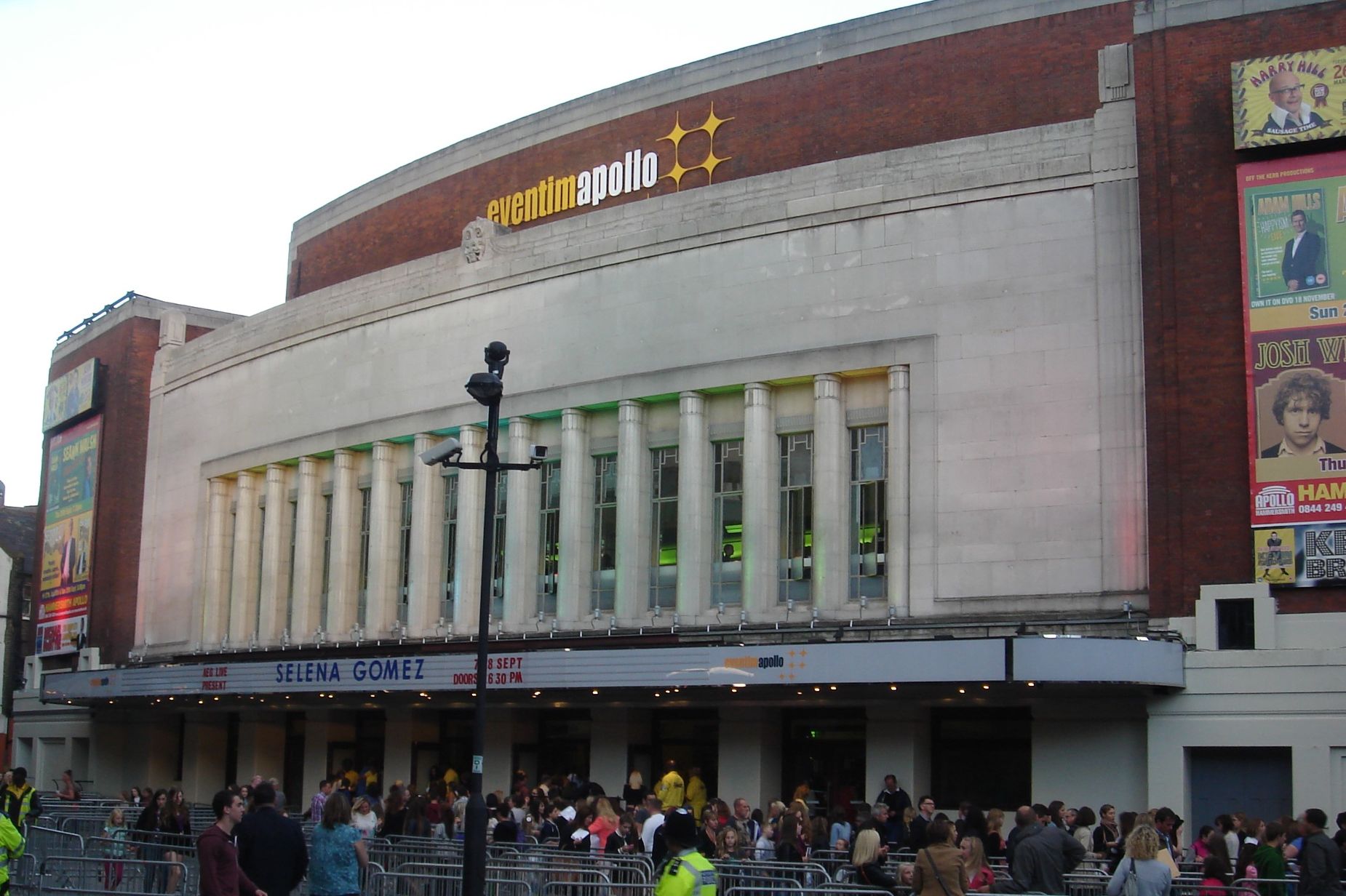 Between June 4th and November 10th, 1964, The Beatles played over 50 cities on four continents. The ever popular “All My Loving” continued to be included in their standard set list throughout this world tour, this being evidenced by its performance at the Hollywood Bowl on August 23rd, 1964. November 10th, 1964 appears to be the date the group finally retired the song for good, as it does not appear in the set list for their three-week engagement at the Hammersmith Odeon in London during Christmas of 1964. Between June 4th and November 10th, 1964, The Beatles played over 50 cities on four continents. The ever popular “All My Loving” continued to be included in their standard set list throughout this world tour, this being evidenced by its performance at the Hollywood Bowl on August 23rd, 1964. November 10th, 1964 appears to be the date the group finally retired the song for good, as it does not appear in the set list for their three-week engagement at the Hammersmith Odeon in London during Christmas of 1964.
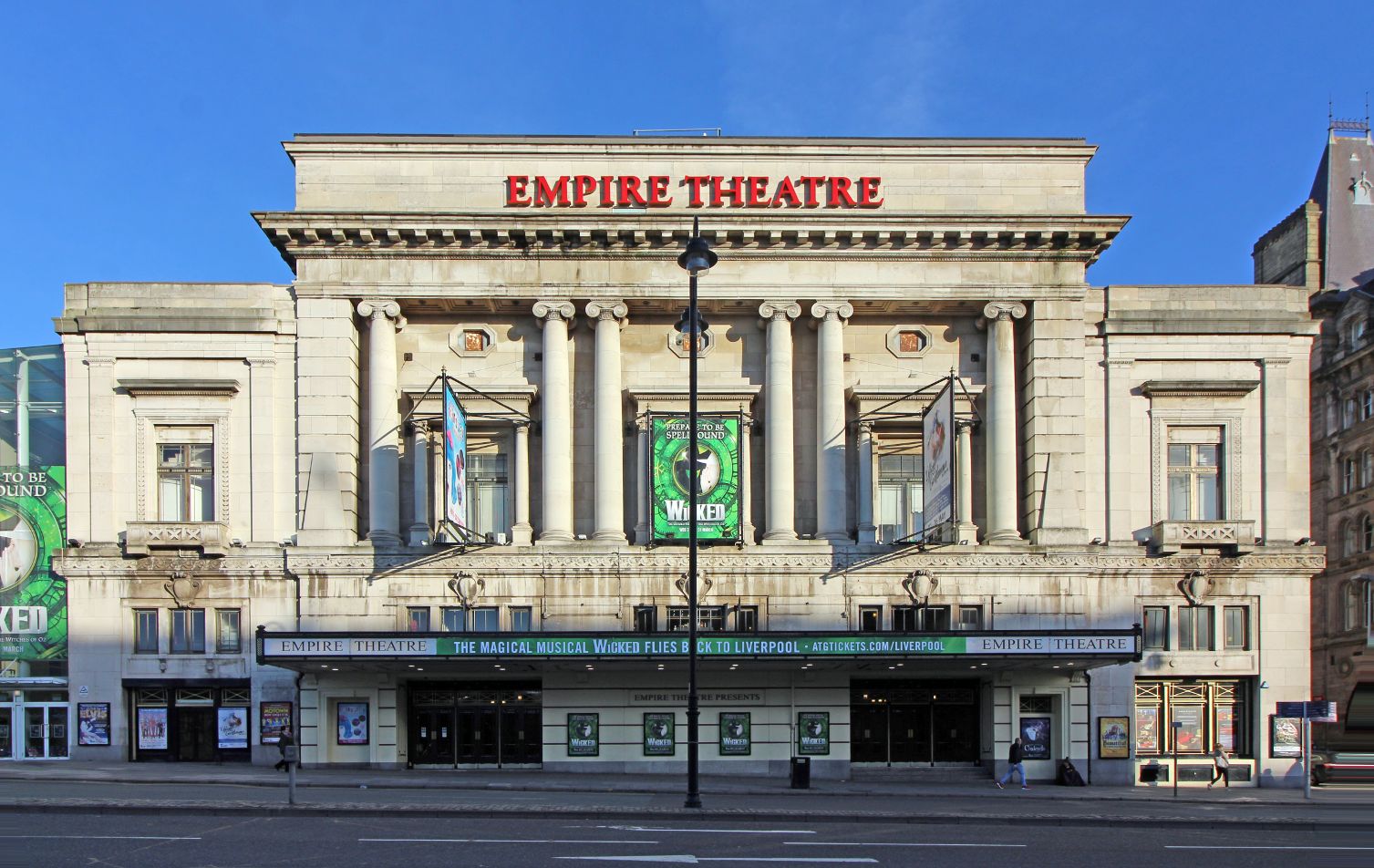 There were nine TV performances of the song, however. The first was on October 20th, 1963 on the popular UK television show "Thank Your Lucky Stars," a lip-synced performance that aired on October 26th, 1963 (nearly a month before the song was released on record). Then came the "Morcambe And Wise Show," which was filmed on December 2nd, 1963 but not broadcast until April 18th, 1964. A live concert at the Empire Theatre in Liverpool on December 7th, 1963 was broadcast later that same evening by BBC Television on a show entitled "It's The Beatles!," "All My Loving" included in their set list. Another "Thank Your Lucky Stars" was filmed on December 15th, 1963, their mimed performance of the song airing on December 21st of that year. There were nine TV performances of the song, however. The first was on October 20th, 1963 on the popular UK television show "Thank Your Lucky Stars," a lip-synced performance that aired on October 26th, 1963 (nearly a month before the song was released on record). Then came the "Morcambe And Wise Show," which was filmed on December 2nd, 1963 but not broadcast until April 18th, 1964. A live concert at the Empire Theatre in Liverpool on December 7th, 1963 was broadcast later that same evening by BBC Television on a show entitled "It's The Beatles!," "All My Loving" included in their set list. Another "Thank Your Lucky Stars" was filmed on December 15th, 1963, their mimed performance of the song airing on December 21st of that year.
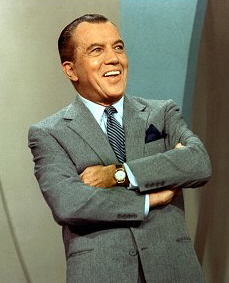 Next came the live broadcast of "Val Parnell's Sunday Night At The London Palladium" on January 12th, 1964. This was followed by their first appearance on the "Ed Sullivan Show" in the US on February 9th, 1964, "All My Loving" being the first song played on this program. February 3rd, 1964, had them film yet another mimed performance of the song for the British show "Big Night Out," this program airing on February 29th of that year. During their world tour of 1964, they filmed a show entitled "The Beatles In Nederland," which was broadcast in The Netherlands on June 8th, 1964, this including 'All My Loving." Finally, while still on tour, they filmed a show specifically for Australian TV called "The Beatles Sing For Shell," which aired in that country on July 1st, 1964. Next came the live broadcast of "Val Parnell's Sunday Night At The London Palladium" on January 12th, 1964. This was followed by their first appearance on the "Ed Sullivan Show" in the US on February 9th, 1964, "All My Loving" being the first song played on this program. February 3rd, 1964, had them film yet another mimed performance of the song for the British show "Big Night Out," this program airing on February 29th of that year. During their world tour of 1964, they filmed a show entitled "The Beatles In Nederland," which was broadcast in The Netherlands on June 8th, 1964, this including 'All My Loving." Finally, while still on tour, they filmed a show specifically for Australian TV called "The Beatles Sing For Shell," which aired in that country on July 1st, 1964.
It is interesting to note that a bit of "All My Loving" is heard in two Beatles movies, the first being at the end of the nightclub scene in "A Hard Day's Night" and as an instrumental rendition in "Magical Mystery Tour."
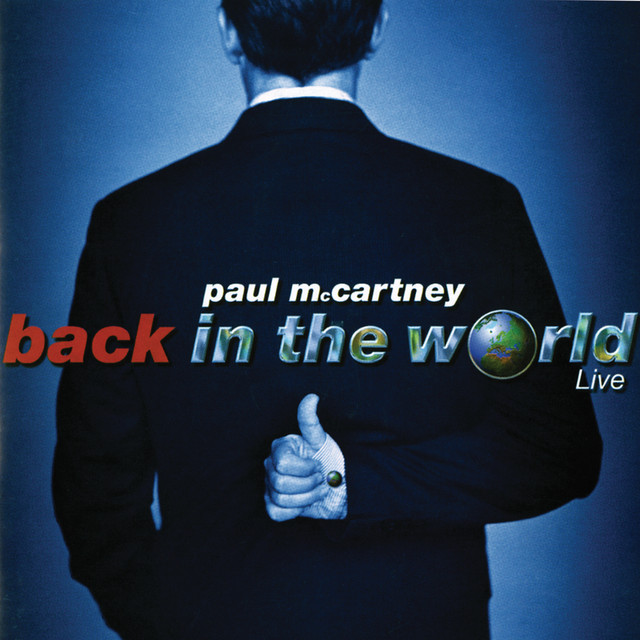 “All My Loving” was a natural to be picked up by McCartney for his 1993 “New World Tour,” which spanned from February 18th through December 16th and reached virtually the entire globe. His “Driving World” tour of 2002 (April 1st to Nov. 18th) also featured the song, as well as his 2003 “Back In The World” tour (March 25th to June 1st), his “'04 Summer Tour” (May 25th to June 26th) and his "Up And Coming Tour" (March 28th, 2010 to June 10th, 2011). He periodically performed the song during his "Out There!" tour (May 4th, 2013 to October 22nd, 2015), his "One On One" tour (April 13th, 2016 to Dec. 16th, 2017) and his "Freshen Up" tour (Sept. 17th, 2018 to July 13th, 2019). “All My Loving” was a natural to be picked up by McCartney for his 1993 “New World Tour,” which spanned from February 18th through December 16th and reached virtually the entire globe. His “Driving World” tour of 2002 (April 1st to Nov. 18th) also featured the song, as well as his 2003 “Back In The World” tour (March 25th to June 1st), his “'04 Summer Tour” (May 25th to June 26th) and his "Up And Coming Tour" (March 28th, 2010 to June 10th, 2011). He periodically performed the song during his "Out There!" tour (May 4th, 2013 to October 22nd, 2015), his "One On One" tour (April 13th, 2016 to Dec. 16th, 2017) and his "Freshen Up" tour (Sept. 17th, 2018 to July 13th, 2019).
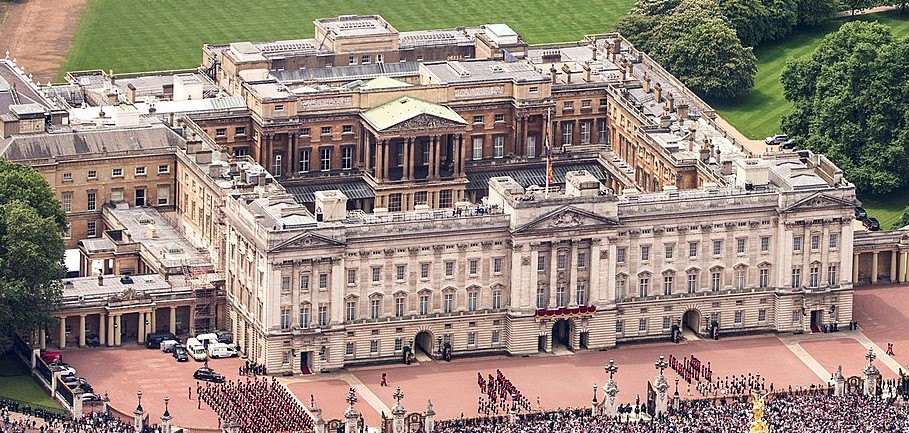 Paul also chose to perform the song for The Queen's Diamond Jubilee Concert on June 4th, 2012 outside of London's Buckingham Palace. "All My Loving" was the second of his five-song set, Paul's appearance being the last musical segment of the entire concert. Paul also chose to perform the song for The Queen's Diamond Jubilee Concert on June 4th, 2012 outside of London's Buckingham Palace. "All My Loving" was the second of his five-song set, Paul's appearance being the last musical segment of the entire concert.
Conclusion
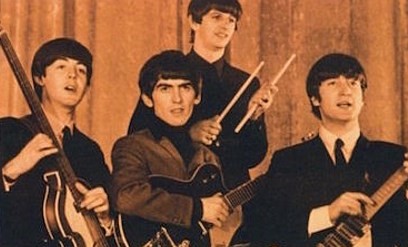 Those early 1964 Beatles fans who may have been debating whether to buy a copy of “Meet The Beatles!,” instead of just being satisfied with their latest singles available on the American market, were no doubt swayed by the inclusion of “All My Loving,” which wasn’t easily available as a single in the early months of 1964. This in effect made the song’s appearance on the Ed Sullivan Show a blatant advertisement to buy their first Capitol album. Those early 1964 Beatles fans who may have been debating whether to buy a copy of “Meet The Beatles!,” instead of just being satisfied with their latest singles available on the American market, were no doubt swayed by the inclusion of “All My Loving,” which wasn’t easily available as a single in the early months of 1964. This in effect made the song’s appearance on the Ed Sullivan Show a blatant advertisement to buy their first Capitol album.
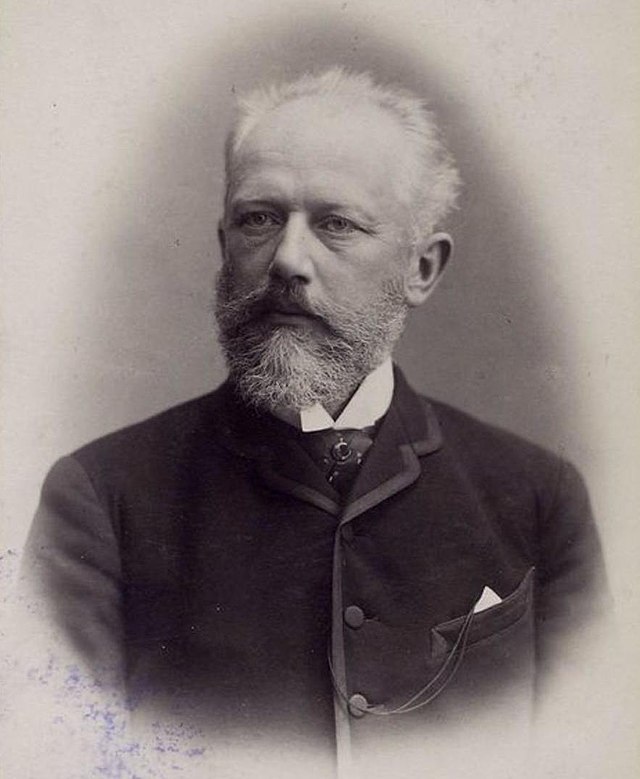 Classical music students have claimed that a tune of Tchaikovsky is buried somewhere in the melody of “All My Loving.” If this claim was ever heard by The Beatles, it assuredly would have caused hysterical laughter, as they always were amused by the over-analyzation their music received by both the press and fans alike. What was apparent was that Paul showed, arguably for the first time, that he was capable of writing irresistible and unforgettable melodies. Some claim that this was the most commercial song they had recorded to date which, amazingly enough, wasn’t issued as a single in Britain or America. The optimism and confidence of this song made it a standout on the “Meet The Beatles!” album and showed McCartney to be a true competitor with Lennon as a singer and songwriter. Classical music students have claimed that a tune of Tchaikovsky is buried somewhere in the melody of “All My Loving.” If this claim was ever heard by The Beatles, it assuredly would have caused hysterical laughter, as they always were amused by the over-analyzation their music received by both the press and fans alike. What was apparent was that Paul showed, arguably for the first time, that he was capable of writing irresistible and unforgettable melodies. Some claim that this was the most commercial song they had recorded to date which, amazingly enough, wasn’t issued as a single in Britain or America. The optimism and confidence of this song made it a standout on the “Meet The Beatles!” album and showed McCartney to be a true competitor with Lennon as a singer and songwriter.
Song Summary
“All My Loving”
Written by: John Lennon / Paul McCartney
- Song Written: Between May 18th and June 9th, 1963
- Song Recorded: June 30, 1963
- First US Release Date: January 20, 1964
- First US Album Release: Capitol #ST-2047 “Meet The Beatles!”
- US Single Release: Capitol #SXA 2047 (Meet The Beatles Jukebox EP)
- Highest Chart Position: #45
- British Album Release: Parlophone #PCS 3045 “With The Beatles”
- Length: 2:04
- Key: E major
- Producer: George Martin
- Engineers: Norman Smith, Richard Langham
Instrumentation (most likely):
- Paul McCartney - Lead and Harmony Vocals, Bass Guitar (1961 Hofner 500/1)
- John Lennon – Rhythm Guitar (1958 Rickenbacker 325), Backing Vocals
- George Harrison – Lead Guitar (1962 Gretsch 6122 Country Gentleman), Backing Vocals
- Ringo Starr – Drums (1963 Ludwig Downbeat Black Oyster Pearl)
Written and compiled by Dave Rybaczewski
|
IF YOU WOULD LIKE TO MAKE A DONATION TO KEEP THIS WEBSITE UP AND RUNNING, PLEASE CLICK BELOW!
Sign Up Below for our MONTHLY BEATLES TRIVIA QUIZ!
|